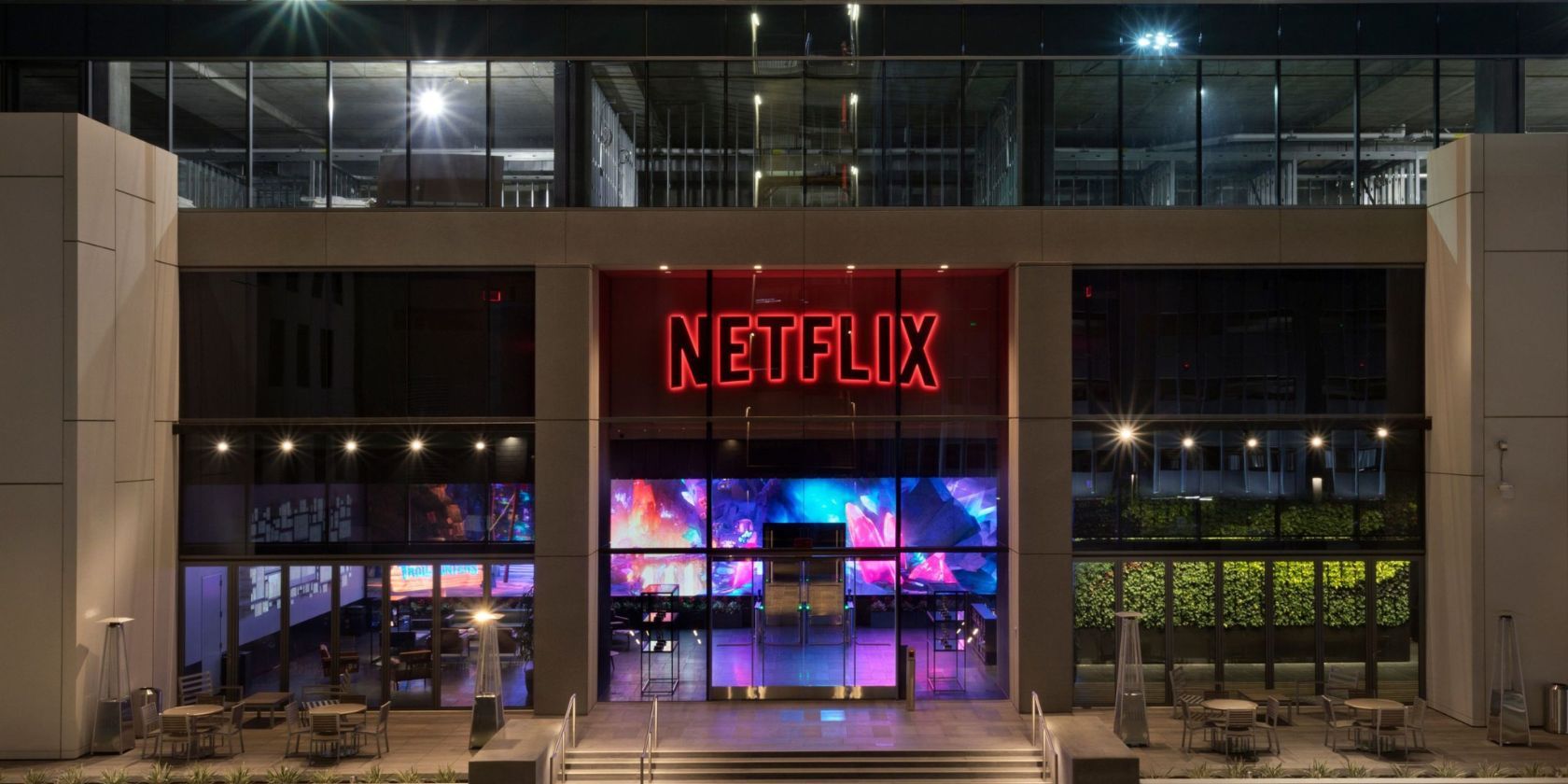Ronald.phillips
Shared posts
New Study Finds Most Enterprise Vendors Failing to Mitigate Speculative Execution Attacks
Moussouris: U.S. Should Resist Urge to Match China Vuln Reporting Mandate
A prominent cybersecurity executive is calling on the U.S. government to resist the urge to match China's reported mandates around early vulnerability disclosure, warning that such a move would "meaningfully and dramatically increase the risk" of zero-day flaws landing in the wrong hands.
The Pros and Cons of Netflix Adding an Ad-Supported Tier
Netflix has kept its platform ad-free for years, but that might change by the end of 2022. As part of its plans to make the platform more accessible for consumers to stream movies and TV shows, Netflix is working on a more affordable tier with ads.
Similar to the MacBook Pro, the M2 MacBook Air Also Features a Single NAND Storage Chip, Reveals Teardown

Apple announced the new M2 MacBook Pro and MacBook Air models at its WWDC 2022 event. While the MacBook Pro was available a few days after the event, the redesigned MacBook Air with an M2 chip was released a few days ago. Last month, it was discovered that the new M2 MacBook Pro featured a single NAND storage chip. Due to this, the MacBook Pro features slower SSD performance in terms of benchmarks. Now, it has been recently discovered in a teardown video that the M2 MacBook Air also features a single NAND storage chip. Scroll down to read more details on the subject.
M2 MacBook Air Features a Single NAND Storage Chip That Slashes SSD Speeds in Benchmark Testing
The teardown of the new M2 MacBook Air is conducted by the YouTube channel Max Tech, showing how Apple has arranged the internals. While the form factor of the new M2 MacBook Air is similar to the previous version, Apple has ditched the wedged design in favor of a rectangular chassis, similar to the M1 Pro and M1 Max MacBook Pro models. Check out more details on the M2 MacBook Air teardown.
It can be seen in the M2 MacBook Air teardown that it features a larger 52.6-watt-hour battery but it has the same 18 hours of battery life per single charge. Other than this, the teardown also reveals the logic board of the machine that houses the M2 processor. It is interesting to note that the base model of the M2 MacBook Air with 256GB of storage features a single NAND storage chip. You can check out the video below for more details.
According to the information provided by the teardown, the M2 MacBook Air features 30 percent to 50 percent slower SSD speeds in benchmark testing compared to the high-end models and the M1 MacBook Air model. Since the SSD and RAM are soldered to the logic board, it can not be upgraded at will, and instead, you will have to spend some extra bucks to get the higher-end model. Apple has shared its side of the story on the MacBook Air's performance, so be sure to check that out as well. You can check out more details on the M2 MacBook Air in our announcement post.
This is all there is to it, folks. What are your thoughts on the single NAND storage chip inside the M2 MacBook Air's base model? Are you looking to get the higher-end variant? Let us know your thoughts in the comments.
The post Similar to the MacBook Pro, the M2 MacBook Air Also Features a Single NAND Storage Chip, Reveals Teardown by Ali Salman appeared first on Wccftech.
The 8 Best Proactive Habits for Building a Remote Career
A remote career allows you to work in your space from anywhere, increasing productivity, saving commute time, work-life balance, and many more benefits. However, if not managed properly, the career choice could lead to stress, burnout, distractions, isolation, and more over-time.
How to Make Cheese Nuggets in Your Air Fryer

Do you love cheese? Do you love nuggets? Do you love tossing things in your air fryer and seeing what will happen? Well then, let me introduce you to Cheese Nuggets, also known as “air-fried halloumi.”
How Westworld Season 4 Is Borrowing From The Franchise's Long, Bizarre Past
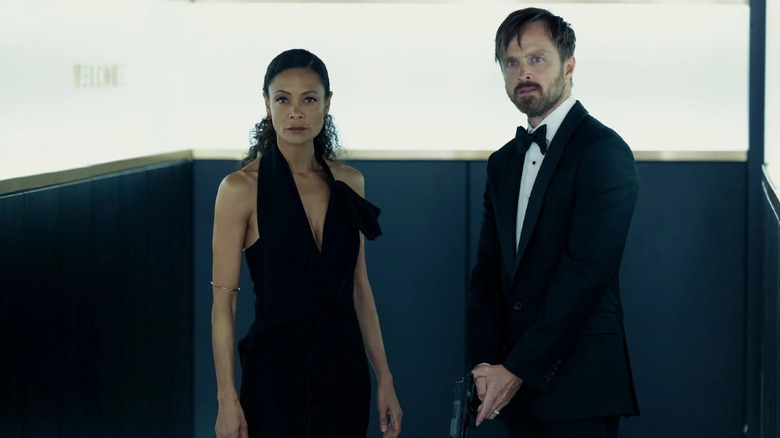
Michael Crichton's 1973 film "Westworld," for all its world-building and thematic complexity, is a simple story at its core. Its structure of a guest attending the titular resort where robot facsimiles of people programmed to fulfill the guest's every whim go haywire and start murdering the humans around them is as direct as a slasher movie, and with its technophobia combined with cynicism about humanity skirting responsibility for its actions, it can even be called quintessential Crichton.
HBO's "Westworld" series, however, is a far more complex work. Creators and showrunners Lisa Joy and Jonathan Nolan have a taste for playing devious games with their audience as much as the characters in the series do with each other. One need look no further than the recently aired fourth episode of season 4, which among its many twists revealed that the first few episodes of the season were not just intercutting between different characters, but different timelines. It's a sneaky trick the show has pulled before, and by this point it's clear Joy and Nolan have made obfuscation and sleight of hand a mainstay of the series.
Yet for all the new characters and ideas "Westworld" the series has dived into, the show continually demonstrates a dedication to mining its source material. In the fourth season alone, the show is drawing inspiration from not just the '73 feature, but the film's sequel (1976's "Futureworld"), a failed 1980 TV series ("Beyond Westworld") and even other works related to the creators of "Westworld."
Beyond Westworld Provides A Loose Template For The First Half Of Westworld Season 4
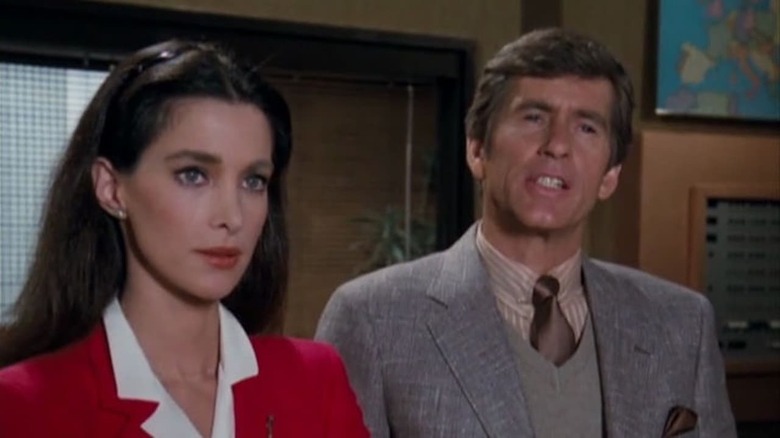
Airing for just a few weeks on CBS in 1980 with a scant five episodes, "Beyond Westworld" was a failed attempt to serialize the "Westworld" concept. Its place in the continuity of the films was ambiguous from the start, seemingly retconning the events of the first film from being the result of an advanced computer virus to the dastardly deeds of an evil scientist, Simon Quaid (James Wainwright). The series then followed Delos employees John Moore (Jim McMullan) and Pamela Williams (Connie Sellecca) as they attempted to thwart Quaid's plans to take over the world using robot sleeper agents in key positions.
While robot "hosts" not knowing they're really hosts has been a staple of HBO's "Westworld" from the first season, it's in the first few episodes of season 4 where the host version of Charlotte Hale/Dolores (Tessa Thompson) is seen explicitly using sleeper agent hosts to do her bidding, positioning themselves to best achieve her goal: turning the bulk of humanity into programmable and controllable beings, flipping the script and allowing the robot slaves to be the new masters. It's a plan Quaid wouldn't have the vision for in "Beyond Westworld," and the host Maeve (Thandiwe Newton) and human Caleb (Aaron Paul) are a far more dynamic pair of investigative heroes than John and Pamela.
Futureworld Expanded The Westworld Concept, Laying The Groundwork For The Series
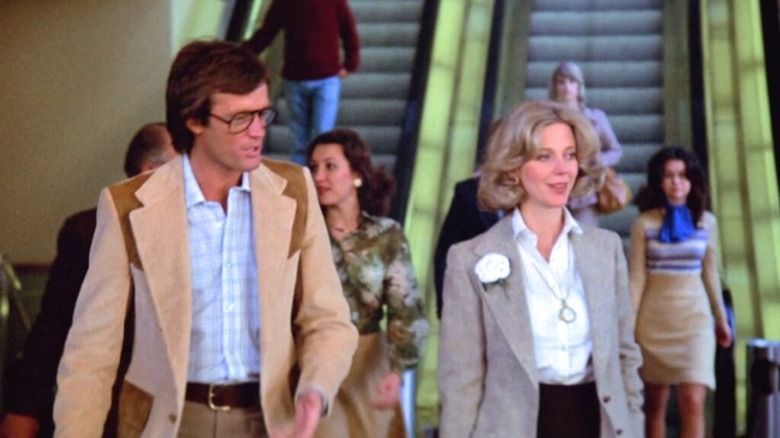
Of course, Charlotte Hale's sleeper hosts in "Westworld" season 4 aren't just any average people. Hale's plan involves replacing (or reprogramming via a parasite she's engineered within special flies who only attack humans) people of influence and authority. This is almost exactly the endgame of Dr. Morton Schneider (John Ryan) in 1976's "Futureworld."
"Futureworld," despite its flaws (such as a truly bizarre dream sequence that features the "return" of Yul Brynner's Gunslinger character from "Westworld"), is a movie that proved the "Westworld" universe had more stories in it besides technology run amok. In the film, written by Mayo Simon and George Schenck and directed by Richard T. Heffron, Delos has recovered from the "Westworld" disaster and now seeks to use a new version of the resort to lure important and influential people there so they can be scanned, murdered, and replaced with robots, the better for the corporation to literally own and run the world.
In fact, the same villainous plan has already been a part of the "Westworld" series, as seen in season 2, when it was revealed Delos had been secretly collecting and storing information on all its guests for future use. Where that information was first used against the world in the form of season 3's predictive supercomputer Rehoboam, it seems Hale is now using it (or a version of it) as originally intended, to replace and/or control the population.
Westworld Season 4's Flies Have A Possible Ancestor In The Ants Of Phase IV
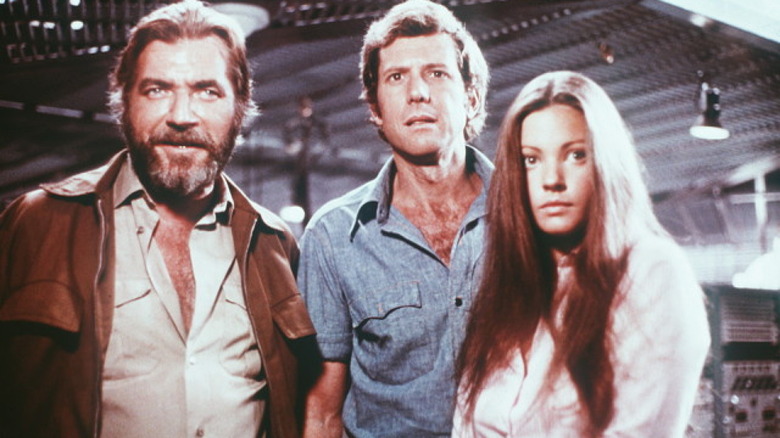
The "Westworld" series' influences aren't limited to the various spinoffs and sequels to the original film, however. Prior seasons have pulled from a variety of source material for plotlines and visual references, from the works of author Philip K. Dick to the films of Sergio Leone to the "Grand Theft Auto" games, as mentioned in this 2016 New Yorker interview with Christopher Nolan and Lisa Joy.
While the writers haven't confirmed it, season 4's parasite-ridden flies — themselves a clever callback to the inciting incident of the series — may be partially inspired by the 1974 film "Phase IV." The movie — the only to be directed by prolific graphic designer Saul Bass — concerns a pair of scientists investigating a mysterious evolution of the planet's ant population, with the insects building enigmatic structures and attempting to communicate some message while manipulating events toward some unknown goal.
Although the ending of the film is left highly ambiguous, it seems the newly evolved ants are attempting to evolve humanity, too — if they want to accept being changed, that is. Bass' original ending contained a surrealistic sequence in which human beings who seemingly refuse such evolution are reduced to being programmed and experimented on, turned into slaves much like Hale's human victims. In any case, not only are the agents of transformation in "Phase IV" and "Westworld" season 4 both insects, but the screenwriter of "Phase IV" is Mayo Simon, co-writer of "Futureworld."
The Future Of Westworld May Still Lie In The Past
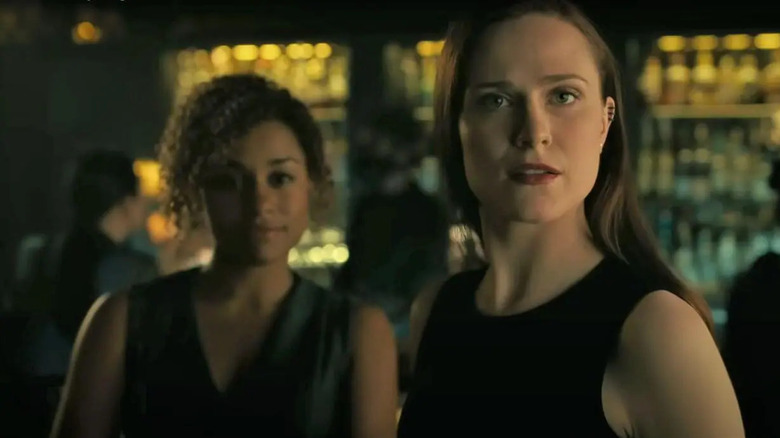
One theme of the "Westworld" series involves humans and hosts stuck in "loops," whether referring to their personalities allowing them to repeat the same mistakes, or history at large repeating itself. It's no surprise to realize the future of the show will likely involve elements from the past, whether it's directly tied to the "Westworld" universe or not.
Fans have name-checked "Futureworld" in their theories before, especially during the second season. At the start of season 4, "Futureworld" made a resurgence on Reddit, with people speculating that the woman known as Christina (Evan Rachel Wood) is secretly living in another park that's meant to emulate a future time period, as in the '76 film.
The fourth episode of season 4 somewhat confirms this, albeit with a nasty twist: Christina's world isn't a Delos park for human guests, but a cage for hapless human beings who've been transformed by Hale's flies and kept under her control. As the first episode of the season hinted at, Hale likely allows free-thinking hosts to visit the city as a similar tourist destination. In this way, this new primary time period for the series is simultaneously "Futureworld" and the plans of its villains made manifest, a future where the world is under the control of the powerful who have access to whatever and whoever they want.
Who knows where the back half of season 4 will take "Westworld" — elements of "Mad Max" and "Matrix" films are in place, with a conflict brewing between a scrappy resistance force and Hale's controlling forces. We'll find out soon enough, but if you're impatient, check out "Futureworld," "Phase IV" or "Beyond Westworld" for potential clues.
Investigate 1996's "Westworld 2000" first-person shooter computer game (complete with FMV!) at your own risk, however.
Read this next: The 14 Best Sci-Fi Shows On Amazon Prime
The post How Westworld Season 4 is Borrowing From the Franchise's Long, Bizarre Past appeared first on /Film.
'Stranger Things 4' Directors Reveal Eddie Munson Alternative Ending - CNET
Intel Core i9-13900K Raptor Lake CPU Gaming & Synthetic Performance Benchmarks Leaked, 5% Faster Than Core i9-12900K On Average

The first gaming and synthetic performance benchmarks of Intel's Core i9-13900K Raptor Lake 5.5 GHz CPU have been leaked by Extreme Player at Bilibili (via HXL).
Intel's Core i9-13900K Raptor Lake Is 5% Faster Than Core i9-12900K Alder Lake on Average In Leaked Gaming Benchmarks
The Intel Core i9-13900K Raptor Lake CPU tested in the leaked benchmarks is a QS sample that features 24 cores and 32 threads in an 8 P-Core and 16 E-Core configuration. The CPU carries a total of 36 MB of L3 cache and 32 MB of L2 cache for a combined 68 MB of 'Smart Cache. It also comes with a base (PL1) TDP of 125W & an MTP of around 250W.
This chip is running around the same 3.0 GHz base and 5.5 GHz boost clocks that we saw in the previous benchmarks by the same leaker. The final chip is expected to hit single-core boost clocks of up to 5.7-5.8 GHz though that remains to be seen till the final variant makes it to the market.
In terms of performance, we have more detailed gaming and synthetic benchmarks with the Intel Core i9-13900K (5.5 GHz) and Core i9-12900K (4.9 GHz) running at their stock frequencies on a Z690 platform with 32 GB of DDR5-6400 memory and a GeForce RTX 3090 Ti graphics card. The Core i9-13900K already has a 12.2% clock speed advantage over the Core i9-12900K so it should be faster by default even if the architecture is the same. The extra uplift comes from the increased cache as it gets over a 50% bump (68 MB vs 44 MB).
Intel Raptor Lake Core i9-13900K vs Alder Lake Core i9-12900K Synthetic Benchmarks (via Extreme Player):

The gaming performance was tested in various titles at 2160p, 1440p, and 1080p resolutions. The average performance improvement seems to be around 5-10% across all three resolutions for the Intel Core i9-13900K Raptor Lake CPU versus its Core i9-12900K Alder Lake predecessors. There are only a few cases where the chip showed huge gains. The cache and higher clocks really seem to be benefitting the minimum frame rate with around 25-30% jumps in a few titles such as PUBG, Forza Horizon 5, and up to 70-80% gains in Red Dead Redemption 2.
The same was the case with the AMD Ryzen 7 5800X3D which not only saw average performance go up with its extra 3D V-Cache but the minimum FPS numbers also went up quite a bit thanks to the increased cache. Notably, the Ryzen 7 5800X3D offered a much bigger cache size compared to the Raptor Lake cache bump (vs Alder Lake CPUs).
Intel Raptor Lake Core i9-13900K vs Alder Lake Core i9-12900K Gaming Benchmarks (via Extreme Player):
Intel Core i9-13900K vs Core i9-12900K Full Gaming Benchmark Performance Breakdown:

One interesting comparison that has been made is the power consumption figures where the Intel Core i9-13900K consumes up to 52% higher in games than the Core i9-12900K and an average of 20% higher power consumption across all three resolutions tested. This means that the next-gen Raptor Lake CPU lineup is going to be more power-hungry than Alder Lake, even in games. The breakdown of average FPS at each resolution is as follows:
- Intel Core i9-13900K vs Core i9-12900K at 1080p: 4.22% Faster Performance on Average
- Intel Core i9-13900K vs Core i9-12900K at 1440p: 6.97% Faster Performance on Average
- Intel Core i9-13900K vs Core i9-12900K at 2160p: 3.30% Faster Performance on Average
- Intel Core i9-13900K vs Core i9-12900K All Res Avg - 4.83% Faster
As for the minimum FPS, the breakdown at each resolution is as below:
- Intel Core i9-13900K vs Core i9-12900K at 1080p: 27.93% Faster Minimum FPS
- Intel Core i9-13900K vs Core i9-12900K at 1440p: 21.83% Faster Minimum FPS
- Intel Core i9-13900K vs Core i9-12900K at 2160p: 12.82% Faster Minimum FPS
- Intel Core i9-13900K vs Core i9-12900K All Res Min Avg: 20.86% Faster
And finally, we have the maximum FPS breakdown for each resolution as listed below:
- Intel Core i9-13900K vs Core i9-12900K at 1080p: 6.29% Faster Maximum FPS
- Intel Core i9-13900K vs Core i9-12900K at 1440p: 4.42% Faster Maximum FPS
- Intel Core i9-13900K vs Core i9-12900K at 2160p: 2.58% Faster Maximum FPS
- Intel Core i9-13900K vs Core i9-12900K All Res Max Avg: 4.43% Faster
Following are all of these results as compiled by @Harukaze5719:

Breaking down the power consumption figures for each resolution tested, we get the following results for the Intel Core i9-13900K vs Core i9-12900K:
- Intel Core i9-13900K vs Core i9-12900K at 1080p: 19.1% Higher Power Consumption
- Intel Core i9-13900K vs Core i9-12900K at 1440p: 19.8% Higher Power Consumption
- Intel Core i9-13900K vs Core i9-12900K at 1440p: 26.2% Higher Power Consumption
Intel Raptor Lake Core i9-13900K vs Alder Lake Core i9-12900K Power Consumption (via Extreme Player):

Intel 12th Gen Alder Lake-S & 13th Gen Raptor Lake-S Desktop CPU Comparison (Preliminary):
| CPU Name | P-Core Count | E-Core Count | Total Core / Thread | P-Core Base / Boost (Max) | P-Core Boost (All-Core) | E-Core Base / Boost | E-Core Boost (All-Core) | Cache | TDP | MSRP |
|---|---|---|---|---|---|---|---|---|---|---|
| Intel Core i9-13900K | 8 | 16 | 24 / 32 | TBA / TBA? | TBA | TBA | TBA | 68 MB | 125W (PL1) 228W (PL2) |
TBA |
| Intel Core i9-12900K | 8 | 8 | 16 / 24 | 3.2 / 5.2 GHz | 4.9 GHz (All Core) | 2.4 / 3.9 GHz | 3.7 GHz (All Core) | 30 MB | 125W (PL1) 241W (PL2) |
$599 US |
| Intel Core i7-13700K | 8 | 8 | 16 / 24 | TBA / TBA? | TBA | TBA | TBA | 54 MB | 125W (PL1) 228W (PL2) |
TBA |
| Intel Core i7-12700K | 8 | 4 | 12 / 20 | 3.6 / 5.0 GHz | 4.7 GHz (All Core) | 2.7 / 3.8 GHz | 3.6 GHz (All Core) | 25 MB | 125W (PL1) 190W (PL2) |
$419 US |
| Intel Core i5-13600K | 6 | 8 | 14 / 20 | TBA / TBA? | TBA | TBA | TBA | 44 MB | 125W (PL1) 228W (PL2) |
TBA |
| Intel Core i5-12600K | 6 | 4 | 10 / 16 | 3.7 / 4.9 GHz | 4.5 GHz (All Core) | 2.8 / 3.6 GHz | 3.4 GHz (All Core) | 20 MB | 125W (PL1) 150W (PL2) |
$299 US |
The Intel Core i9-13900K delivered around 10% faster single-threaded and 35% faster multi-thread performance on average versus the Core i9-12900K in the previously leaked benchmarks. Overall, it looks like the CPU will be faster than the Ryzen 9 7950X in workload-specific tasks while being on par in gaming benchmarks. But with AMD releasing its Ryzen 7000 3D V-Cache chips based on the same Zen 4 core architecture later this year, Intel's gaming crown, if they manage to grab it from Zen 4, will be short-lived.
The Intel 13th Gen Raptor Lake Desktop CPUs including the flagship Core i9-13900K is expected to launch in October on the Z790 platform. The CPUs will be going up against AMD's Ryzen 7000 CPU lineup which also launches in Fall 2022.
The post Intel Core i9-13900K Raptor Lake CPU Gaming & Synthetic Performance Benchmarks Leaked, 5% Faster Than Core i9-12900K On Average by Hassan Mujtaba appeared first on Wccftech.
Bear takes a bellyflop from a waterfall

The National Park Service official twitter just posted this awesome video, taken from a live cam from Brooks Falls, Katmai National Park, Alaska. Watch these bears living their best lives. While a few enjoy standing in the water in the background, one frisky fella does an amazing belly flop from a little ledge into the water below. — Read the rest
Rebel FM Episode 547 - 07/15/2022
[IndieGala](Game) Leisure Suit Larry 5 - Passionate Patti Does a Little Undercover Work
Shooting The Wild Bunch's The Battle Of Bloody Porch Scene Was Exhausting
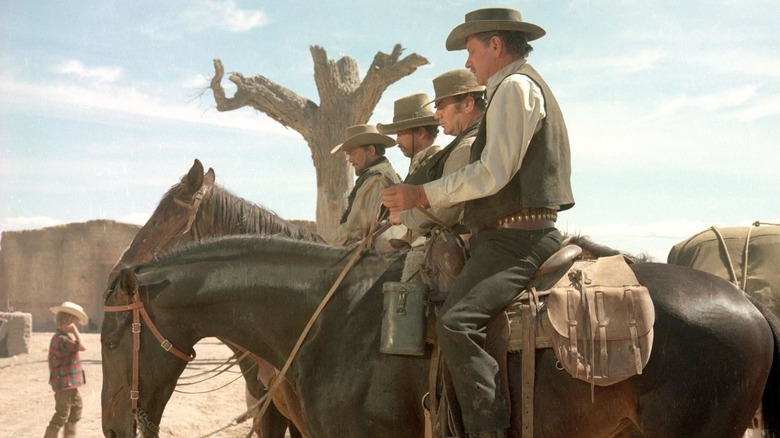
From the striking open credits, where we see a group of giggling children torturing a pair of scorpions with a swarm of angry ants, it's clear that "The Wild Bunch" is a movie on a mission. There is no innocence left in this bug-eat-bug world, it says right off the bat, and the gleeful nastiness of the kids foreshadows the notorious shootouts that will follow.
Sam Peckinpah's bleak, elegiac film hit theaters in June 1969, around the height of the Vietnam War. The director saw his film as an allegory for the conflict beamed into the homes of millions of Americans every night, and he wanted his savage epic to purge audiences of their love for the largely bloodless violence they normally saw on their screens. While the Italian spaghetti Westerns of Sergio Leone and Sergio Corbucci pushed the envelope in terms of bloody shootouts and antiheroic characters, their American counterparts were still largely rooted in the template of classic Hollywood Westerns.
Peckinpah was a fierce, combative, abusive, alcoholic, ultra-macho director, so naturally his idea of curing audiences was by giving them one of the most shockingly violent Hollywood Westerns ever made. At a time when kids not all that much older than the children in the opening sequence were getting shipped off to Vietnam to die, he told it as he saw it: There is nothing fun or glorious about violence, and the real Old West wasn't just games. To hammer the point home, "The Wild Bunch" culminates in a bravura massacre set piece that pushed the director and his crew to the limits of their creativity and patience.
So What Happens In The Wild Bunch Again?
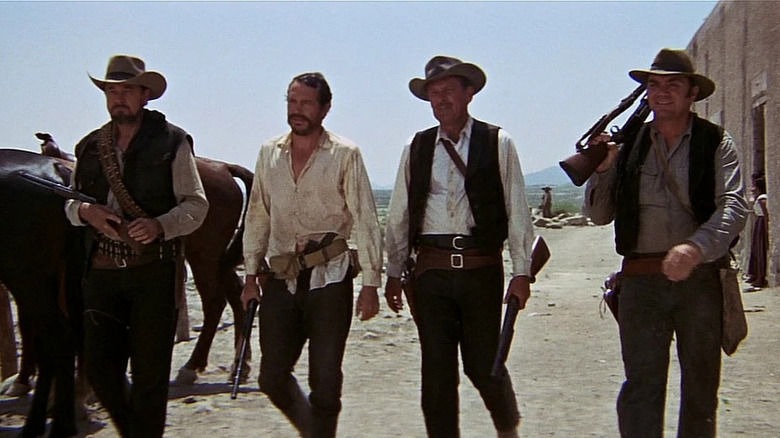
The year is 1913. Gang leader Pike (William Holden) is in town with his bunch of aging outlaws for a classic "one last job." Their target is a railway office and a stash of silver, but the heist is interrupted by Deke (Robert Ryan), Pike's former partner in crime, and his posse of sweaty bounty hunters. A massive firefight breaks out, and many innocent townsfolk are caught in the deadly crossfire before Pike escapes with what's left of his gang amid the chaos.
Discovering that their loot was a worthless decoy, they duck across the border into Mexico and head to the hometown of Angel (Jaime Sánchez), their youngest member. There, they learn of the ruthless General Mapache (Emilio Fernandez), whose troops have been raiding the village for supplies. Pike and the gang cut a deal with Mapache to rob a U.S. munitions train in exchange for gold. The holdup is a success, but Angel is captured and tortured by the general's men for stealing a crate of weapons to help the villagers defend themselves.
When Mapache refuses the gang's offer to buy Angel's freedom, the remaining four men tool up and decide to bust him out of the general's compound by force, striding gravely toward their fate. They know they are doomed, but with their weary sense of honor, they decide to go out with all guns blazing anyway.
The grand finale of "The Wild Bunch" is the appropriately titled "Battle of Bloody Porch" sequence, a cacophonous showdown between the heavily outgunned gang and hundreds of the general's troops. To put it all together, it needed patience, craft, and a ridiculous amount of squibs.
A Symphony Of Carnage
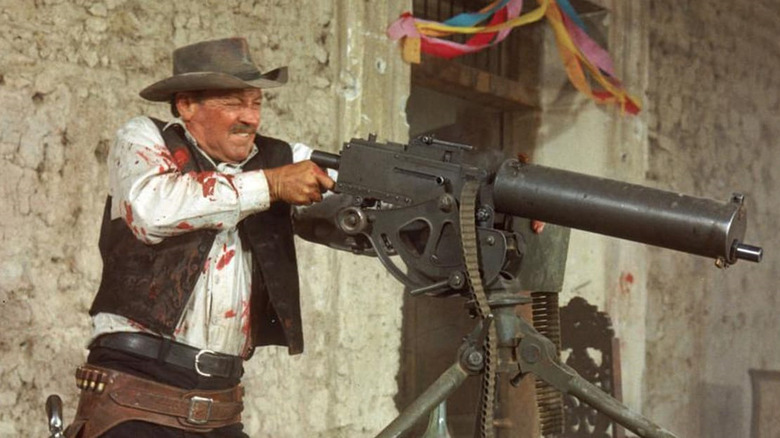
The Battle of Bloody Porch is a dazzling symphony of carnage that spans five brutal minutes and over 300 edits. The sequence took 12 days to film, using around 10,000 squibs packed with blood and raw meat to create the devastating effect of hot lead ripping through vulnerable human flesh. To create the sense of time stretching or contracting, Peckinpah used a multi-camera setup running film at different speeds, from 24 to 120 frames per second (via Cinephilia Beyond).
Just the sheer logistics of costuming so many extras was mind-boggling, with hundreds of outfits requiring mending, cleaning, and drying before the next take. As costumer Gordon Dawson explained:
"All the blood hits on the wall had to be cleaned up every time. All those people who just ran in and got shot, now we're going to shoot it again, and they're going to get shot again. They've got to come back in, in clean clothes. I don't know. It was like five or six days this way. And then they say, 'OK, boys, turn it around, we're going back the other way.'"
The hard work paid off with one of the greatest shootouts committed to celluloid. "The Wild Bunch" came out a few months before "Butch Cassidy and the Sundance Kid," and the films couldn't be more different. While George Roy Hill's crowd-pleaser ends with our lovable rogues freeze-framed in heroic poses, there was nothing left to the imagination in the Wild Bunch's fatalistic blaze of glory. Sam Peckinpah's antiheroes were men out of time as the Old West faded into modernity, cold-blooded killers still bound by tenuous notions of loyalty and honor, and who would die brutally for it.
The Aftermath
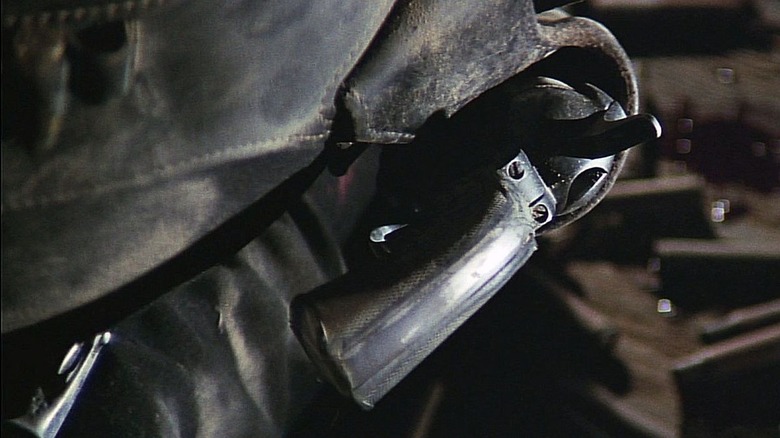
"The Wild Bunch" was predictably greeted with hand-wringing in certain quarters due to the extreme violence, but critics largely saw it for the work of art it undoubtedly is. One of the film's harshest critics was Sam Peckinpah himself; despite his reputation for bloodthirsty machismo, he admitted to Barry Norman he had gone too far in pushing his message:
"I made 'The Wild Bunch' because I still believed in the Greek theory of catharsis. That by seeing this we would be purged by pity and fear and get this out of our system. I was wrong."
Afterward, he regretted the decision. While his goal was to make people question their enjoyment of cinematic violence, it troubled him that many viewers were repulsed by it. As he later told Roger Ebert:
"To tell you the truth, I really cannot stand to see the film myself anymore. It is too much an emotional thing. I saw it last night, but I do not want to see it again for perhaps five years."
The legacy of "The Wild Bunch" is a complicated one. If Peckinpah's intention was to turn audiences off to violence by making them sick of it, his film paved the way for even more blood and violence on our screens. Perhaps only the opening battle of "Saving Private Ryan" has matched it for ferocity, virtuosity, and moral purpose since. On the flip side, it's hard to imagine scenes of wanton carnage played for scares, laughs, or pure entertainment value ("Trash," according to Peckinpah) making it to the screen if "The Wild Bunch" hadn't opened the floodgates in the first place.
Read this next: The 20 Best Westerns Of All Time
The post Shooting The Wild Bunch's The Battle of Bloody Porch Scene Was Exhausting appeared first on /Film.
The Pendulum Effect and Security Automation
The last few years have been filled with examples of the “Pendulum Effect”, where trends swing from one extreme to another before settling at an equilibrium, somewhere in the middle. Think about it from an IT and security perspective.
The Game Of Thrones Showrunners Had A Unique Way Of Keeping Kit Harington 'In Line'
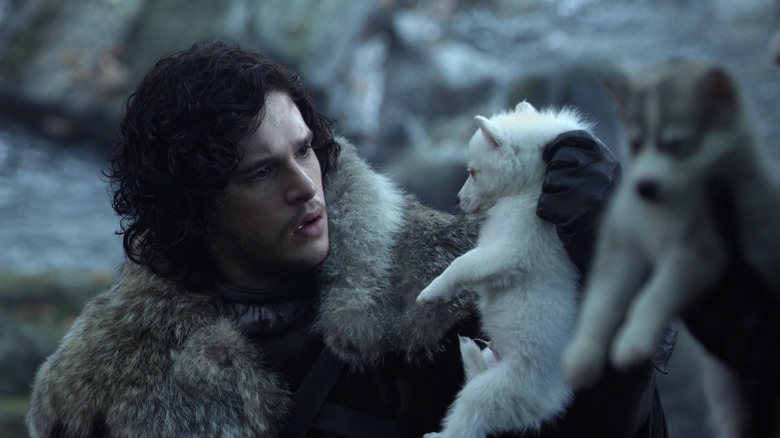
"Game of Thrones," the HBO adaptation of the popular fantasy series from author George R.R. Martin might have a controversial legacy, but it is undoubtedly a historic triumph in television. The series had a lengthy, tedious journey from book to screen, from a poorly failed pilot to eight successful seasons that earned raucous critical praise. The show paved the way for the careers of its many stars, especially Kit Harington, who had been cast in the role of Jon Snow after he graduated from drama school, at 19 years old.
Today, Harington is easily one of the biggest "Game of Thrones" stars. Painted as the ultimate brooding warrior who dresses in black and wants to be taken seriously, Jon Snow's character was a fan favorite throughout the show, and it's thanks to the actor's terrific efforts. That wasn't always the case, though. Harington didn't always walk around with a solemn look on his face and seriousness in his stride. In the failed, unreleased pilot for "Game of Thrones," Harington wore a wig and sported a clean-shaven "baby" face for his character.
While we don't know how bad the episode was, it's said to be bad enough for "Game of Thrones" showrunners to have playfully intimidated Harington with it.
The Failed Pilot Is Painful To Watch
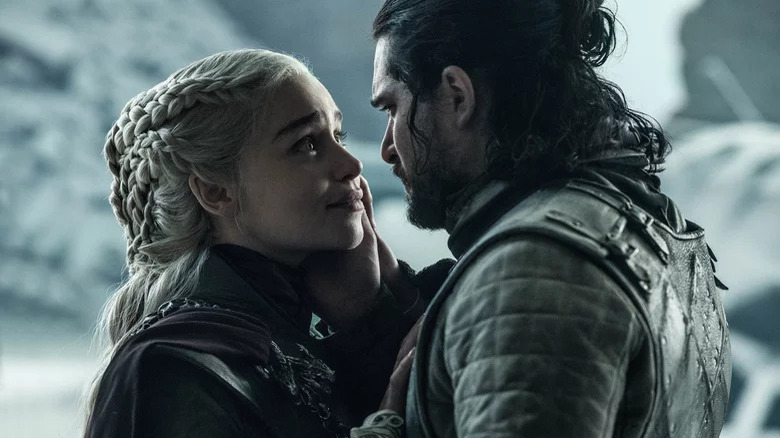
Before "Game of Thrones" released the cluttered, unhinged spectacle that is its final season, the show had a failed pilot. And although it was never displayed to the world, showrunners D. B. Weiss and David Benioff aren't afraid of openly commenting on how flawed the episode was. They've even referred to the experience of watching the pilot as "painful."
While that sounds rather disastrous, D. B. Weiss and David Benioff made the most of it: they used the old pilot tape to keep Kit Harington in line, in case he ever pissed them off.
In an interview with The Guardian, Harington revealed that the co-creators often sent him a "screengrab" from the episode to keep him in check.
"They say, if I ever piss them off too much, they'll release it on YouTube. Every now and then, they send me a screengrab, just as a threat."
Years later, when Weiss and Benioff were done re-working the pilot episode, they had recast characters and filmed most of its content all over again. One of the many changes made to then-23-year-old Harington for his character included him growing out his famous black curls and sprouting a beard.
"Game of Thrones" had been transformed into something darker, grittier, and more violent, all elements critical for it to evolve into a fantasy show for grownups. As the seasons went on, Jon Snow became the soul of the story, with both characters and plotlines revolving around him at the center. The rest is history.
Read this next: 13 Fantasy Films That Never Got Sequels
The post The Game Of Thrones Showrunners Had A Unique Way Of Keeping Kit Harington 'In Line' appeared first on /Film.
Review: GOOD MADAM, Chilling Haunted House Story
 Laws might change, but it can takes years, or even generations, to change a society and how it operates. What's bred in the bone cannot be easily overturned, and even as some people might techncially have the hard-fought freedom they are entitled to, old habits can die hard, and take those who seek proper justice with them. And there are forces too invested in the old ways to stand so readily aside. Good Madam (originally titled Mlungu Wam) looks at a deep and dark symbiotic relationship between white employer and black employee, the latest in a long line of generational servitude and its unhealthy effect on all it surrounds, and how it seems only one person can see the truth of its insidious nature. Director and...
Laws might change, but it can takes years, or even generations, to change a society and how it operates. What's bred in the bone cannot be easily overturned, and even as some people might techncially have the hard-fought freedom they are entitled to, old habits can die hard, and take those who seek proper justice with them. And there are forces too invested in the old ways to stand so readily aside. Good Madam (originally titled Mlungu Wam) looks at a deep and dark symbiotic relationship between white employer and black employee, the latest in a long line of generational servitude and its unhealthy effect on all it surrounds, and how it seems only one person can see the truth of its insidious nature. Director and...
Windows 12 may be coming in 2024, according to report
Microsoft seems to be preparing to change the release cadence for new Windows versions, according to a new report by Windows Central‘s Zac Bowden. Microsoft is apparently going back to the old way of releasing new Windows versions, releasing major new Windows versions every three years or so, meaning we could be getting Windows 12 in 2024.
According to the report, Microsoft has seemingly canceled what would have been next year’s major update (known as Sun Valley 3) – and instead will wait for 2024, three years after the original release of Windows 11 – to release the next version of Windows (presumably Windows 12). However, that doesn’t mean Windows 11 users will be left with nothing new to try out in the meantime.
Microsoft is going to be dropping new features for current Windows 11 users, so some of the features Insiders get to try out will make their way to the general public before the next major Windows release. These feature drops will happen every few months, up to four times a year, according to the report. We’ve seen some glimpses of this when Microsoft brought weather information to the taskbar earlier this year. These new features are referred to as “Moments”, and many of the features that were planned for next year’s major update, will be released this way for users running Windows 11 version 22H2.
It’s clear that Microsoft doesn’t always need to release major Windows updates to enable new features. For example, the Windows Subsystem for Android was essentially just an app you can install on Windows 11, and it rolled out a few months after the OS was first launched. At the same time, this new release cadence can make each new version of Windows more exciting, since there’s more time to build new features into each release, plus there’s more time to find and squash any bugs before general availability.
Still, this is a big shift from the path Microsoft has been on for the past few years. Since Windows 10 was introduced in 2015, we generally got two major new versions per year, and with Windows 11, Microsoft said it would release a major new version every year. That was just one year ago, so this is certainly an unexpected change in direction. Either way, Microsoft has yet to officially announce this change, which means internal plans could still change.
Souce: Windows Central
The post Windows 12 may be coming in 2024, according to report appeared first on XDA.
These Are the Best Breads for French Toast
My life is a house of carbs. I love them all and I don’t plan on stopping, but sometimes when my precious breads and cakes go stale or boring I try to give them a second life—not just to reduce waste, but because it gives me an excuse to make French toast.
This familiar but versatile breakfast dish is sweet, custardy, and satisfying, and it works best with stale bread. Most types of stale bread, that is. To choose the best bread, cake, or pastry to turn into French toast—oh yeah, this meal goes way beyond just bread, folks—you need to ask yourself a few questions.
How to choose a good French toast bread
Consider the crumb
If you’ve got stale hot dog buns or old Panettone staring at you, then you’re in luck: Both of these can be successfully French-toastified even though they are wildly different in presentation and flavor. They both work because of their “crumb,” or texture.
The crumb of a particular bread or cake refers to its inside structure. If you think of bread with a tight crumb, then it has small holes that are evenly dispersed. Bread with an open crumb, or an open structure, has larger, more irregular air pockets. Since French toast involves soaking up a substantial amount of sweet, eggy custard (or eggnog), the best bread for soaking should have a tight crumb. An open crumb, like the large pockets in ciabatta or a baguette, won't catch as much custard.
What is the crust like?
My least favorite French toast has been with a baguette. The crust of that lean bread is meant to be tough and chewy, and that doesn't change after the custard soak. Similarly, if you have a leftover rustic loaf of sourdough, you need to beware of this. That crust is basically a thick skin around the outside of the bread. Enriched breads—one's with butter, eggs, and sugar in the dough—have a thin, delicate skin, like challah and brioche. These breads are great French toast breads. Loaves that have thick, tough crusts are not ideal. No matter how long you soak the bread for, that skin will always be chewy.
Although a chewy crust definitely interrupts the texture of a soft, custardy bite, you may very well be into that sort of thing. I like to go after a plateful with little else than a fork, and a thick crust is going to require some elbow grease. You can mitigate that, however, by using a serrated knife and sawing the crusts off the slices before the soak, or even scoring the crust.
Will your bread fall apart?
Structure is a big factor when you know the carb in question is about to sit in a puddle of egg and dairy, and then get griddled or even grilled. A good quality French toast needs to be indestructible in the face of liquid and frying, while maintaining its pillowy reputation. Look for breads that have a good gluten structure. This doesn’t necessarily mean tough or chewy, though; brioche is a favorite for this application because it’s soft, enriched, and usually comes in a loaf you can slice as thick as you want. It works because it has a sturdy structure—a solid gluten framework with some extra help from the eggs in the dough.
My favorite types of bread for French toast
My recommendations will always be thick slices of enriched bread, like challah, brioche, milk bread, babka, or Hawaiian rolls. These breads all exhibit the necessary traits of great French toast bread: tight crumb, thin crust, and structural integrity. Store bough loaves may come pre-sliced, which is okay, but a bit more predisposed to falling apart.
My general rule is, the thinner the slice, the faster the soak. If you can, drop by your nearest bread bakery and see if they can give you unsliced loaves of bread. Then you can slice them to your desired thickness at home. Use thicker slices to make stuffed French toast, or explore the textural contrast of crispy and creamy with crème brûlée French toast.
Breads aren’t the only carbs you can use for French toast
Breads with a soft crust are well suited for French toast because they can handle the process without falling apart, but that doesn’t mean breads are the only carbs that work.
Some cakes and pastries are sturdy enough to withstand a quick custard soak and a splash in the frying pan, too. Blueberry muffins and loaf cakes are quick breads that have enough structure to hold up; just do a light soak in the custard or they risk coming apart before they see the griddle.
She Will – Movie Review (4/5)
The post She Will – Movie Review (4/5) appeared first on Heaven of Horror.
8 Ways the James Webb Space Photos Are Giving Me an Existential Crisis
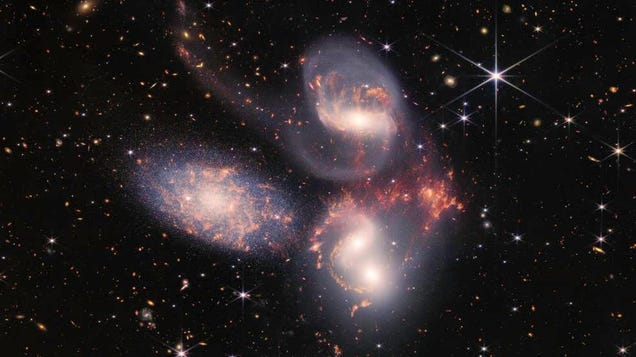
This week, NASA released the first images from the Jame Webb Space Telescope, giving us a never-before seen view of the cosmos. This towering achievement for humanity allows us to see further out into space, and further back in time, than we have ever been able to before. We can now see the first stars to ever exist,…
Old Wrapped Things Up A Little Too Neatly
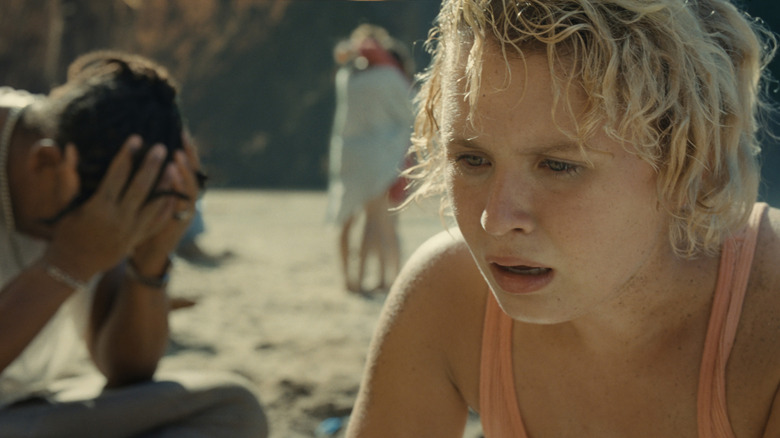
M. Night Shyamalan's "Old" has a premise bound to creep everyone out — aging a whole lifetime within a single day. It's an amazing set-up, but it fails to stick the landing. The conclusion of "Old" rushes to tie up every unresolved plot point so quickly that none of the explanations feel satisfying. Despite everything that the movie does right, the last twenty minutes ruin what could have been one of the most memorable horror movies of the decade.
In the 2021 thriller, a family facing health and marital troubles takes a vacation at a secluded beach resort. The family — which consists of father Guy, mother Prisca, and children Trent and Maddox — is soon led to a private beach with a small group of other guests, where their aging processes are suddenly accelerated by an unknown force.
As the film progresses, the group realizes that they are unable to surpass the rock barrier that lines the interior edge of the beach. They conclude that the rocks are the cause of their aging. Just when they have lost all hope, Trent remembers an encoded message given to him by the hotel manager's nephew. He decrypts the message and it says "my uncle doesn't like the coral." Trent and his sister Maddox — the only surviving members of the party — take this as a sign and escape to safety through a batch of coral. As the siblings make their escape, a new layer of the movie is revealed.
It Has You On The Edge Of Your Seat — At First
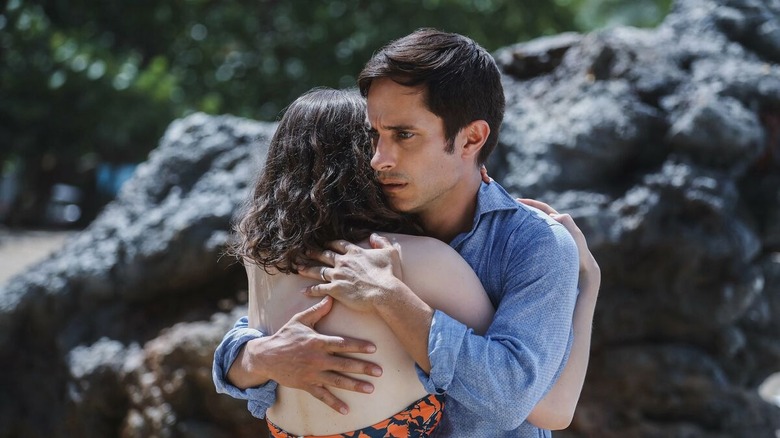
The group was placed on the beach by a group of scientists, with Shyamalan himself playing a guard who watches the folks trapped on the beach. The scientists use the beach to test the life-long effects of medications within a single day. They justify the deaths of their test subjects because they use data to put life-saving drugs onto the market more quickly. Their underground operations are foiled later that same day when Trent and his sister escape. Trent immediately alerts the police to what happened on the beach and the lab is thrown into chaos. Shyamalan is known for his twist endings, but this twist ties every loose end in a far-too-neat bow.
"Old" starts out as an exciting movie with mystical elements and terrifying body horror. A woman with a bone disease becomes a deformed, spidery creature. A little girl becomes a pregnant teenager within a day. A man loses his mind and murders someone. These events all feel virtually inexplicable at first, but the scientific explanation is unraveled slowly. The characters learn that they are each suffering from different health conditions and that the rocks are holding them hostage. When Trent and Maddox are the only two left standing, this steadily-paced storytelling goes into double-time, and every unresolved issue is wrapped up in rapid sequence.
In The Last Twenty Minutes, The Trouble Starts
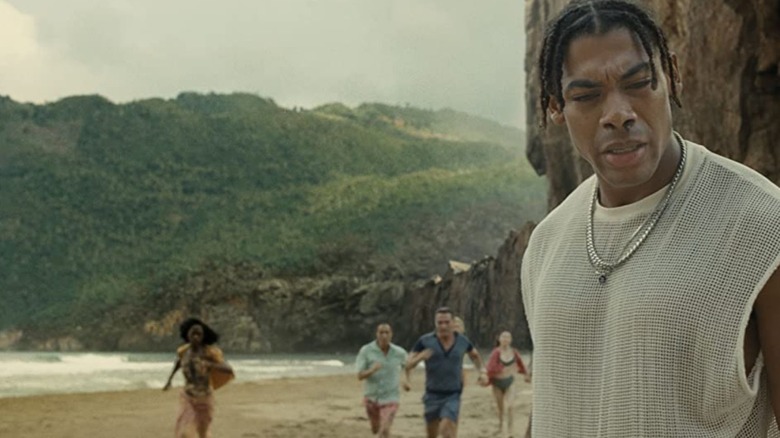
The ending takes its first turn for the worst when Trent remembers the note that his friend wrote him. His sudden memory feels totally out of the blue. If Trent had decoded this message too early, he may never have been able to deduce its meaning. The note about how the hotel manager "doesn't like the coral" inspires Trent to immediately assume the coral is a path to safety. This feels like a bit of a stretch, even after the rest of the ending is revealed. Maybe the hotel manager didn't like the coral because the test subjects would die swimming out to it, costing him precious data? These narrative conveniences feel lazy, but they definitely could have been overlooked if not for what comes next.
The most mystical elements of "Old" — the powers of the coral and the rocks — remain totally untouched by explanation. Shyamalan keeps the biggest mystery of the film open-ended, chalking it up to the wonders of the natural world. The group of main characters is gathered together and placed on the beach for a scientific reason. This begs a more thorough scientific explanation for the rapid aging effects of the rocks and the purifying effects of the coral. Instead, the director leaves us guessing.
And Just Like That, It's Over
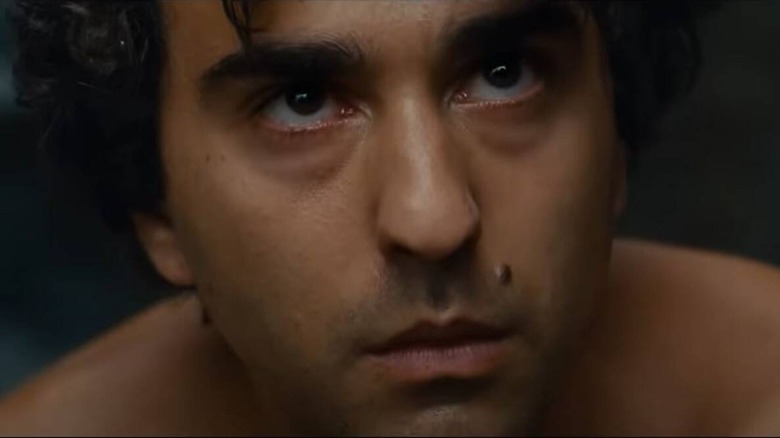
When the scientists are introduced, it opens up a whole new world within the universe of "Old." The lab is intriguing and morally complex, but we see very little of it. It would have been interesting to understand more about the scientists, but they are introduced quickly and rushed offscreen.
Since over seventy trials are said to have been executed in quick succession, it seems unlikely that the police or even the FBI would not have caught wind of these operations before. At first, the audience might assume that the government has allowed the scientists to conduct their experiments for the greater good. How else would they have managed to kill seventy groups of presumably wealthy people, including full families with young children, without alerting the authorities?
This possibility is quickly ruled out when Trent alerts a police officer. The scientists abandon the lab and it's clear that they won't be coming back. It's disappointing — and wraps everything up much too quickly. It would have been much more interesting if the nefarious goings-on in the lab were backed by the government. Did the government turn the other way, sacrificing the few to save the many? Did they have a hand in the dealings themselves? Could this have gone all the way to the top? Sadly, the buck stopped with the scientists, condensing what could have been an elaborate global conspiracy into the walls of the hotel. We'll just have to make do with the rest of the movie, which works much better than its clunky, rushed conclusion.
Read this next: The 50 Best Documentaries You Can Watch On Netflix Right Now (July 2022)
The post Old Wrapped Things Up A Little Too Neatly appeared first on /Film.
What to Do If You Ever Get Swallowed by a Humpback Whale
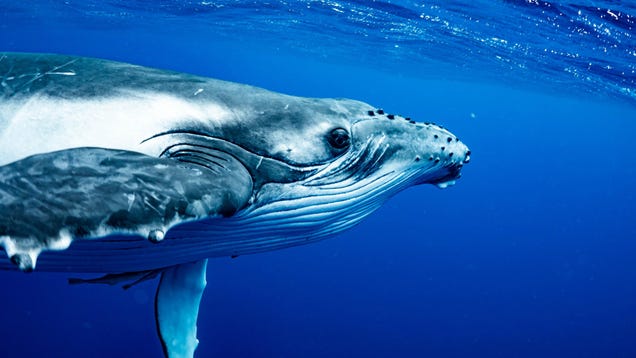
Commercial lobster diver Michael Packard claims he was scooped up by a humpback whale while he was out for a dive last summer in Cape Cod, Massachusetts. Speaking about his experience, he told a local Boston television station, “I felt this huge bump and everything went dark. Then I felt around, and I realized there…
Base M2 MacBook Air Features Slower SSD Speeds in Benchmarks, Apple Responds

Apple's latest and greatest MacBook Air with an M2 chip is finally here as reviews keep coming in with mixed insights. The new MacBook Air with Apple's custom M2 chip comes with a major redesign and a brand-new display housing the notch up top. We have previously seen how the base M2 MacBook Pro model features slower SSD speeds in benchmarks due to the single NAND storage chip. It looks like Apple has stretched the approach to the M2 MacBook Air as well as it also features slower SSD speeds in benchmarks. Scroll down to read more details on the subject.
Apple's Latest M2 MacBook Air With 256GB Storage Features Slower SSD Speeds in Benchmarks Due to a Single NAND Chip
The base model of the M2 MacBook Air with 256GB of storage capacity features a single NAND chip and it will reflect in the benchmarks. However, the real-world performance might vary depending on the type of workload. It was uncovered last month that the base model of the M2 MacBook Pro with 256GB of storage featured up to 50 percent slower read speeds and up to 30 percent slower write speeds compared to the previous model with the same configuration due to a single NAND chip.

While the new M2 MacBook Air shares the same fate as the Pro model when it comes to SSD speeds in benchmarks, Apple has shared its side of the story. In a statement to The Verge, Apple stated that even though the benchmarks show a difference compared to the previous model, the real-world performance is "event faster."
Thanks to the performance increases of M2, the new MacBook Air and the 13-inch MacBook Pro are incredibly fast, even compared to Mac laptops with the powerful M1 chip. These new systems use a new higher density NAND that delivers 256GB storage using a single chip. While benchmarks of the 256GB SSD may show a difference compared to the previous generation, the performance of these M2 based systems for real world activities are even faster.
While Apple shares all glory for the new M2 MacBook Air, we will wait for the relevant tests to see how the machine performs with day-to-day tasks. Previously, we covered how the M2 MacBook Pro is slower than the M1 MacBook Pro with the same 256Gb storage capacity when it comes to real-world usage. Nonetheless, the updated design and form factor of the notebook is a more than welcome addition.
This is all there is to it, folks. Are you planning to get your hands on the base model of the M2 MacBook Air? Let us know your thoughts in the comments section below.
The post Base M2 MacBook Air Features Slower SSD Speeds in Benchmarks, Apple Responds by Ali Salman appeared first on Wccftech.
Google's tool to turn old laptops into Chromebooks is now widely available
Earlier this year, Google announced ChromeOS Flex, a tool that lets anyone take an old Windows or Mac laptop and give it new life by installing Chrome OS. After launching ChromeOS Flex in “early access,” Google now says that Flex is ready to “scale broadly” to more Macs and PCs.
The basics remain the same. You can visit the ChromeOS Flex website to make a bootable Chrome OS installation on a USB drive to ensure that your system works properly, and you can then fully replace your old computer’s OS with Chrome OS if everything checks out. As for what’s new, Google says it has tested compatibility with over 400 different devices. That was part of the intention of the early access program — it let Google gather a ton of user feedback and fix some 600 bugs that were identified over the last few months.
While anyone can install ChromeOS Flex, Google is mostly positioning this as a tool for businesses or schools to extend the usefulness of older hardware. To that end, IT departments can actually deploy Flex over their networks rather than update every computer with a USB drive. Google also notes that Flex devices can be managed using the Chrome Enterprise Upgrade, which lets departments manage apps and policies across a whole fleet of computers.
This all comes about a year and a half after Google bought Neverware, a company that first had the idea of letting users take old computers and turn them into Chromebooks. Now that ChromeOS Flex is being deployed widely, Neverware’s CloudReady software will be transitioned to Flex in the coming weeks and the standalone CloudReady product will be shut down. That shouldn’t be a major issue for anyone, though, as Flex is now stable and has some features that CloudReady didn’t, like Google Assistant support.
Chrome OS Flex is finally ready for a wider rollout
In February this year, Google introduced Chrome OS Flex — a modified version of Chrome OS that you can install on most PCs and Macs. At the time, the company offered an early version of the new software experience to select “large customers” and internal employees. Now, Chrome OS Flex is finally available for a broader audience.
Chrome OS Flex offers the same software experience as Chrome OS on Chromebooks. It’s a lightweight operating system that supports the Google Assistant, Family Link accounts, Smart Lock, Instant Tethering, and Nearby Share. Unlike Chrome OS, it’s compatible with a wide range of PCs and Macs, making it the perfect choice for enterprises or anyone with outdated hardware.
The new Chrome OS Flex release also comes with a couple of improvements based on the feedback received during the initial trial run. This includes additional device compatibility, stability improvements, and more.
You only need a USB drive to try out Chrome OS Flex on your device. Simply head over to the Chrome OS Flex support page, create the USB installer and boot your device using the USB installer. On the Welcome to Chrome OS Flex screen, select Get Started and then pick “Try it first” on the following page. Follow the on-screen instructions to try the software experience on your device.
If you end up liking it, you can install Chrome OS Flex on your device using the same USB installer. Select “Install Chrome OS Flex” on the Start using Chrome OS Flex screen instead of “Try it first,” and follow the on-screen instructions to set install it on your machine. Before you do any of that, make sure to check the Chrome OS Flex certified models list to see if your device is compatible or not.
While Google has previously said that it will make Chrome OS Flex available for personal use, we’re not sure if it is available for individuals at the moment. We’ll update this post with more details as soon as we learn more.
The post Chrome OS Flex is finally ready for a wider rollout appeared first on XDA.
A New Jersey couple has uncovered wads of cash from the 1930s buried in the backyard of their home - leading them to uncover the shocking history behind the property, which was believed to be a former brothel. So what's buried under the floor? [Interesting]
12 Underrated James Caan Movies You Need To See
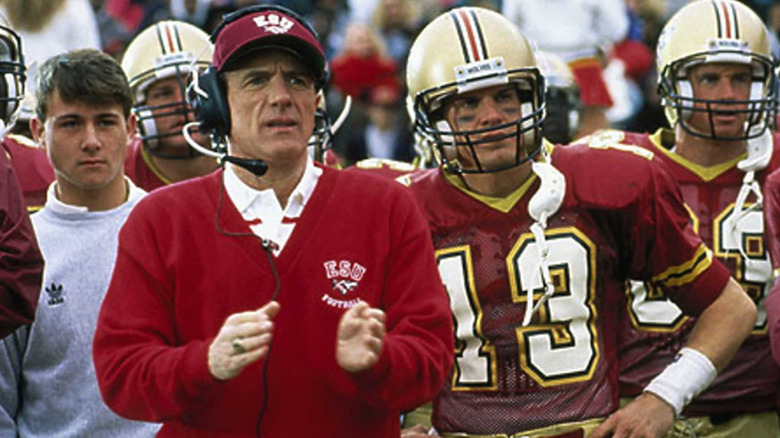
James Caan, who died on July 6, 2022, was a Big Ten college quarterback for Michigan State in the 1950s. A quarterback is the football equivalent of a field general. He must convey the unmistakable quality of leadership all while taking blows from all directions and never stopping to bask in the glow of his dazzling accomplishments. Even at their brashest, great quarterbacks are no-nonsense, and even when they lose, quarterbacks have to keep their heads held high.
Caan was also a no-nonsense actor. Frills were never part of his performances, and even as his most revelatory there was something straight-forward about his brilliance. If he wasn't the film's leading man, he conveyed the sense that he was the lead of a separate picture that just happened to crossover with the film he was currently in. Caan took losses throughout his life and career, but you never saw them accumulate on-screen. Every time Caan made a movie, he came to win, pure and simple. Maybe that's why he made a dozen films worth seeing that didn't even make our 15 Best Movies list. That's what no-nonsense winners do. Here are 12 underrated James Caan movies you really need to see.
The Way Of The Gun (2000)
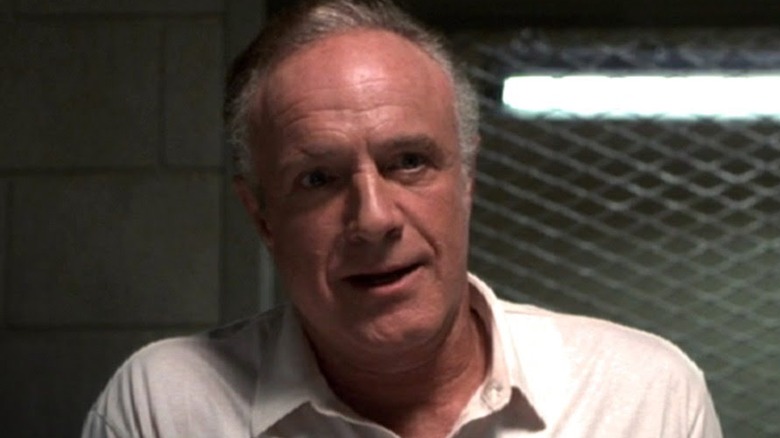
"The Way of The Gun" is an ugly-hearted movie. It quite literally begins with two obnoxious club-goers (including a not-yet-famous Sarah Silverman) hurling derogatory epithets at two equally obnoxious criminal drifters (Ryan Phillipe and Benicio Del Toro), who then proceed to hurl misogynistic epithets at the club-goers before beating them down sophomorically. It's like someone genetically engineered the worst first date scene ever and then filmed it impeccably. This movie does not crave your empathy. It exists, in part, to test it. That's by design.
In case you didn't know, "The Way of The Gun" is the directing debut of Tom Cruise whisperer Christopher McQuarrie. It bears his best hallmarks, but they're diamonds in the movie's proverbial rough. The dialogue is course but sonically brilliant. The constant subversion of crime and western tropes is electric but also provocative to the point of cringe. And then there's James Caan, who gives a textured performance so low-key gorgeous it sort of takes your breath away. Caan's Joe Sarno is the contrapuntal note to Phillipe and Del Toro — one who suggests their brash offensiveness is a destructive folly of youth, and tenderly introduces mortality's weight to the movie's fray. "[The] thing you can assume about a broken-down old man is that he is a survivor," Caan notes during the movie's midsection. Like any notable trial, "The Way of the Gun" is a movie you fight through, but it's also one you remember vividly. Don't say I didn't warn you.
Eraser (1996)
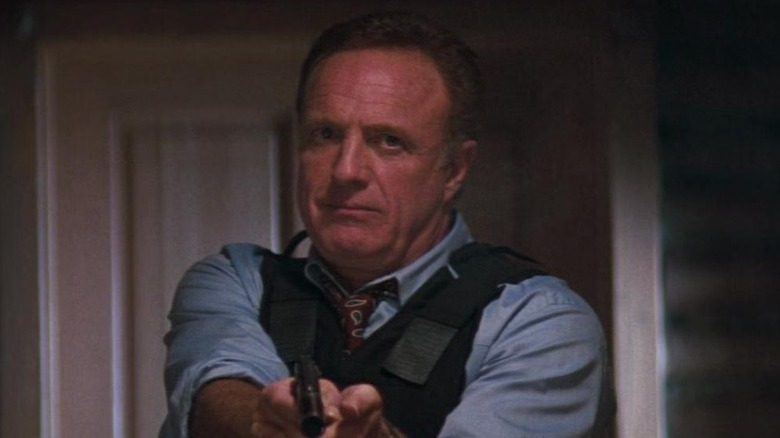
Few directors have ever had a run of films like Chuck Russell. No, the filmmaker has never directed a movie that's likely going to make The Criterion Collection or an AFI list (at least one of them should), but from 1987-1996, Russell helmed the best "A Nightmare on Elm Street" movie, the ecstatically gory "The Blob," Jim Carrey's seminal comedy "The Mask," and "Eraser." All of these movies rule in their own way. "Eraser," specifically, rules because it features Arnold Schwarzenegger bursting into the reptile house of Central Park's zoo, guns blazing, while guitar solos rip in the background. That's Criterion-worthy stuff. Two minutes later, he's killing henchmen via crocodiles. That might be even better.Truly, everyone and everything in "Eraser" elevates it to a slightly higher plane than it occupies on paper. The threadbare plot — a U.S. marshal who "erases" witnesses gets too close to a conspiracy and forces wish him dead — is an excuse for Russell to stage elaborate and gonzo action beats. In "Eraser," Arnold doesn't just dive from a burning plane to snare a free-falling parachute, he then uses that parachute and attacks the burning plane. The movie's default setting is "too much." But everyone comes ready to play on an excessive wavelength, including James Caan. Caan parlays his no-nonsense charms into a treacherous marshal who becomes the movie's heavy. He overdoes it, yet it feels just right. That's the Chuck Russell way, and "Eraser" is a glorious example of it.
The Program (1993)
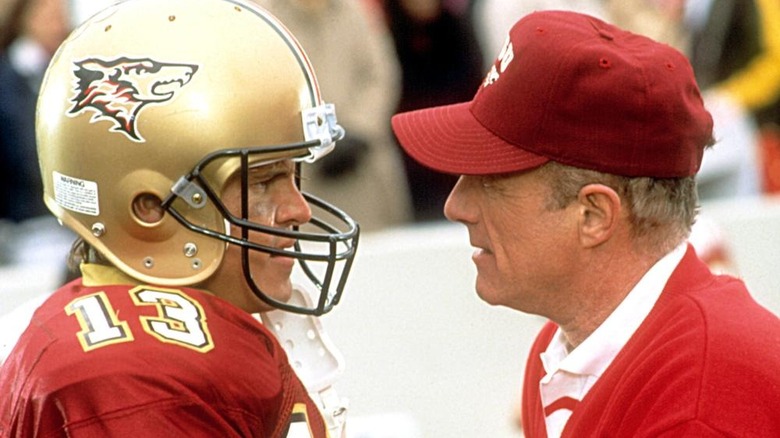
James Caan's football experience manifested on-screen at multiple crossroads of his career. It happened most notably during 1971's "Brian's Song," but more interestingly in 1993's "The Program." This isn't a knock on "Brian's Song," which is one of the best football and Chicago sports movies ever made. It's praise for what "The Program" specifically asks of James Caan, a colossal acting talent that happened to fundamentally understand the insane demands college football places on its players. The results are exhilarating.
"The Program" is about a college football coach (Caan) who looks the other way when his players' reckless behavior leads to a winning season. Sometimes this behavior is genuinely funny. The sequence where Alvin Mack psyches out an opposing running back by incorrectly identifying him as the guy who shot his mom is breathtakingly wrong and hysterical. On other occasions, it yields real pathos. A subplot between a transfer student and football recruit named Darnell (Omar Epps) and his tutor, Autumn (Halle Berry), is filled with grace notes that play on race, class, and stereotypical assumptions equally, many of which stem from ESU's increasingly unethical practices. In this way, "The Program" is a step up from director David S. Ward's more famous "Major League." While it lacks that film's iconic moments or portraits of how sports can transform a metropolis, "The Program" is authentic and funny. That makes it worth a look.
Flesh And Bone (1993)
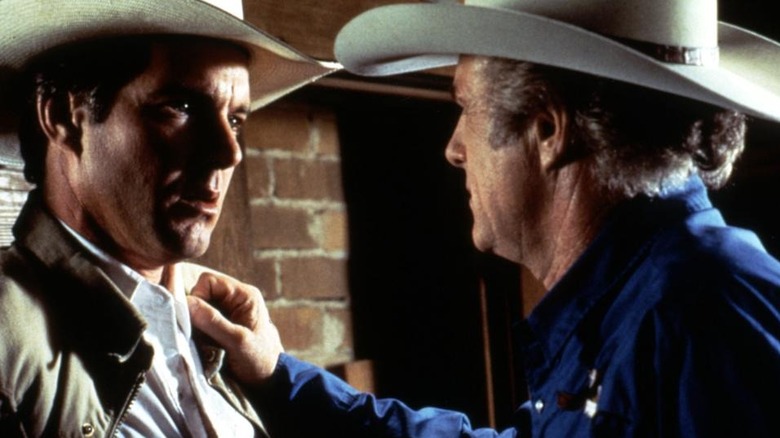
There's an argument to be made that "Flesh and Bone" is the most underrated movie of James Caan, Dennis Quaid, Meg Ryan, and Gwyneth Paltrow's respective careers. Steve Kloves' noir western doesn't lack noticeable star power. It's drenched in tension from the first frame and creeps towards its conclusion like nails running down a chalkboard. One wouldn't accuse it of being pleasant; noir rarely is. While the movie devolves into a series of coincidences that fall apart on paper, Kloves and his able cast still land them like gut punches. There's an economy to the film that foreshadows the expert adaptation skills Kloves would unleash in his "Harry Potter" scripts and follow-up feature, the excellent Michael Chabon tale "Wonder Boys." "Flesh and Bone" doesn't overstay its welcome.
That also gives it space to haunt you for days after, particularly James Caan, who has never been more steely than he is throughout Kloves' picture. Caan was never shy about playing disreputable or malicious characters. Here, he's downright evil. If you were wondering how much malice Caan's charisma could effectively mask, "Flesh and Bone" is a tremendous answer.
Silent Movie (1976)
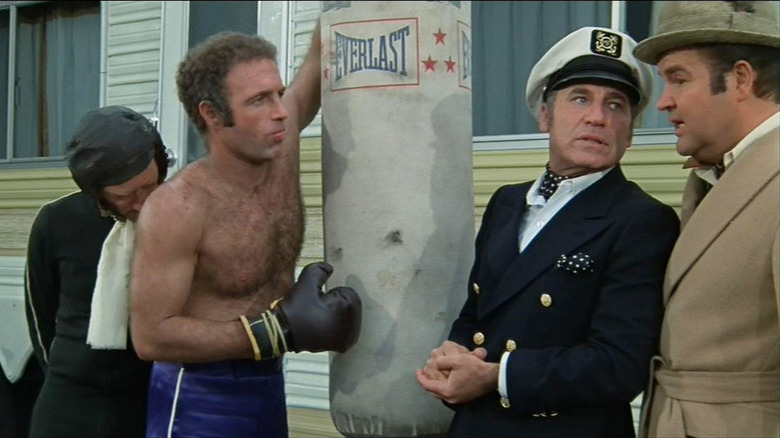
"Silent Movie" is easily among the best movies where actors play themselves. Mel Brooks' reliably zany and sharply satirical skewering of the film industry features a host of the 1970s biggest stars sending their images up, from James Caan to Liza Minnelli to Burt Reynolds. Each has a deeply enjoyable time. Caan, in particular, brings swagger and a devilish playfulness to the sequence he anchors, in which director Mel Funn (Mel Brooks), Dom Bell (Dom DeLuise), and Marty Eggs (Marty Feldman) covertly recruit Caan for their project while he's on location for an already funded movie. If this sounds awesome, that's because it is. And, inexplicably, "Silent Night" is no longer one of Brooks' most remember comedies despite that awesomeness.In fairness, Brooks' copious 1970s references and silent movies themselves have both gone out of vogue. "Spaceballs" satirizes a franchise that's still very much in the pop-culture lexicon, and "Silent Movie" isn't as trailblazing as "Blazing Saddles," nor is it so easily adaptable for the stage as "The Producers" and "Young Frankenstein" were. That's a shame because, in its bridging of two disparate cinematic styles and decades, it reveals Brooks' singular artistry. We shouldn't stay silent about its excellence.
Games (1967)
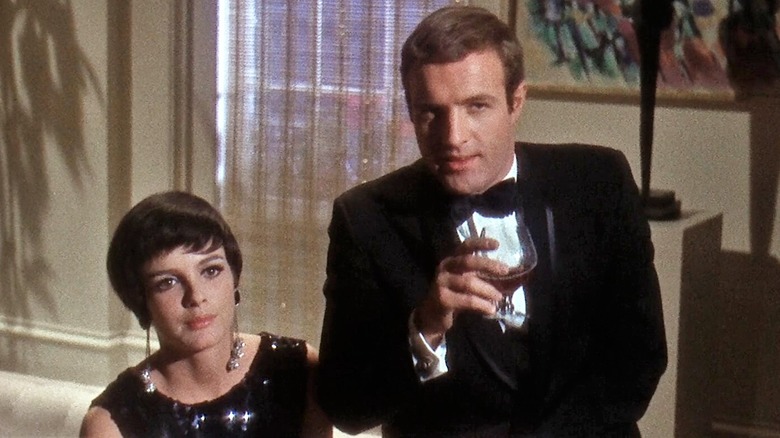
Of all the films on this list, "Games" feels ripest for rediscovery. The film's sparse settings and twisty plot are a dark predecessor to the currently en vogue run of star-studded murder mysteries ("Knives Out," "Death on the Nile," "See How They Run"), but they also channel Alfred Hitchcock as well as Henri-Georges Clouzot's landmark thriller "Diabolique" expertly. It doesn't hurt that "Games" and "Diabolique" also share the Oscar-winning powerhouse, Simone Signoret. It also doesn't hurt that both Katharine Ross and James Caan appear in it early into their careers, still chomping at the bit to make their names.
The result is a movie that's rough around the edges yet elegant and shocking. You can see why it's been lost to time while simultaneously understanding how anyone could prefer it to thrillers from the era critics celebrate today. The less said about "Games," the better. It plays by a specific set of rules too good to spoil here and, if you don't know them, they're worth finding out.
Les Uns Et Les Autres (1981)
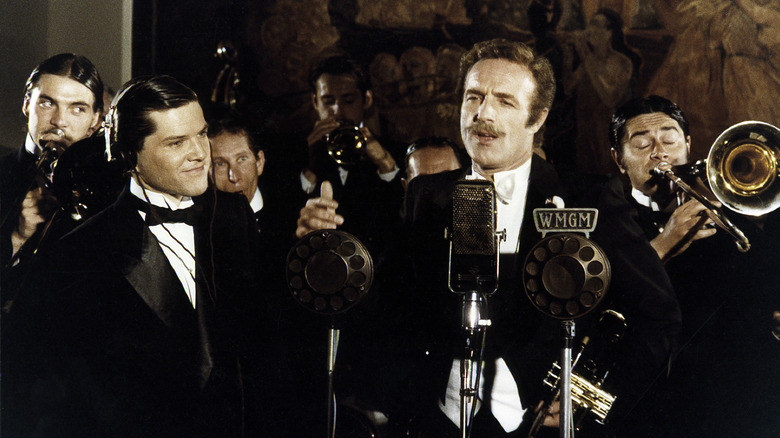
There are epic films and then there's 1981's "Les Uns et Les Autres" (also known as "Bolero"). Claude Lelouch's generational epic spans four separate countries — France, Germany, the United States, and Russia — partly occurs during World War II and the Holocaust, and brings multiple stories together through a grand, cathartic ballet sequence. The movie won the Technical Grand Prize at 1981's Cannes Film Festival, and you only need to get minutes into its runtime to understand why. That "Les Uns et Les Autres" finds moments of restraint and subtlety is almost miraculous.
Thankfully it does, which is one of many reasons one should rush to see it. To explain the plot of "Les Uns et Les Autres" is beside the point. Instead, know that the movie succeeds because it works both as a testament to the power of art and a lavish explosion of cinematic art's possibilities. It wants to make you believe in the need to create and express; it's hard to imagine getting through all three ecstatic hours of it and feeling otherwise.
City Of Ghosts (2002)
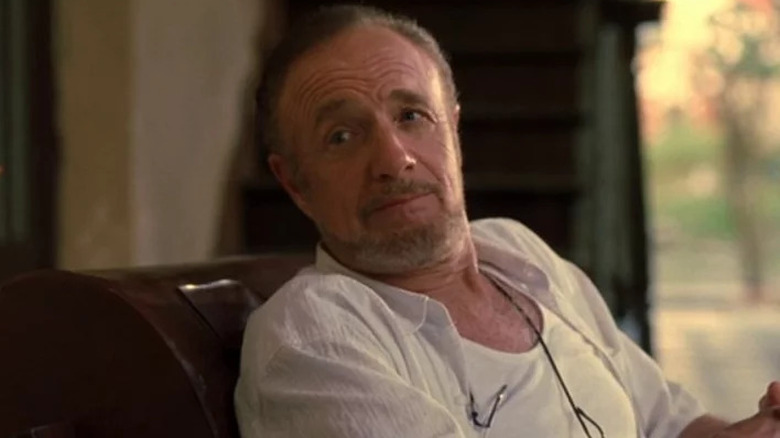
Despite a romantic subplot that overtakes its much more interesting "mentor has gone missing" story, Matt Dillon's feature directorial debut effort is a deeply felt James Caan showcase. At times, it feels constructed solely for that purpose. "City of Ghosts" is technically premised on a con man played by Dillon traveling halfway around the world to Cambodia in the hopes of retrieving insurance fraud money from a trickster played by Caan. Caan, as a character and performer, has to be worthy of that journey.
Put simply, the best version of "City of Ghosts" would be a feature-length meditation on misdirection and mortality. The film understands that you can't con a world you no longer understand or belong in, and, when Cann and Dillon share the screen, that thesis feels almost palpable. Caan, in particular, conveys the tug of war between the drive of ambition and the weariness of old age, showing his character's struggle to let go in quiet yet loaded moments. It's arresting stuff. Even if "City of Ghosts" can't live up to the bar Caan sets, it's a sterling reminder of how high he could raise a project's internal expectations simply by walking on screen.
Hide In Plain Sight (1980)
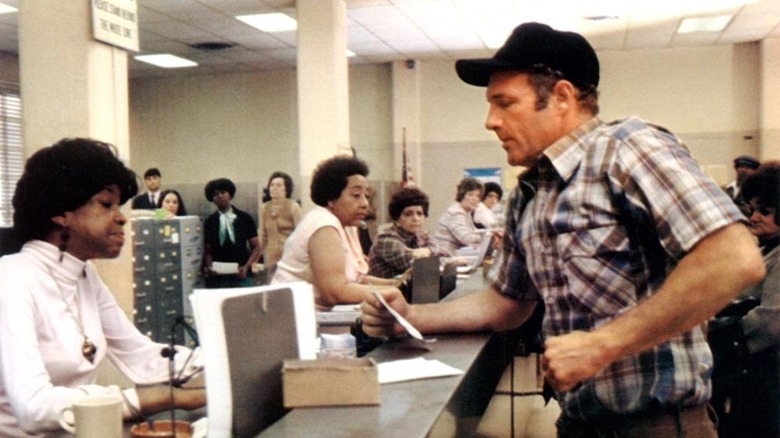
James Caan was a director, but "Hide in Plain Sight" was the only film he helmed, which is a shame. The stranger than fiction story, adapted from the book by Leslie Waller and inspired by the real-life case of a Buffalo man whose children were seized by the United States government, is imperfectly executed. The movie is also a guide to what Caan valued as an artist: It concerns a working-class guy who fights for what's right. Caan would often hardscrabble characters on either side of the law. It displays a deep interest in both suspenseful filmmaking and unobtrusive poignancy. On both counts, it delivers.
Yes, "Hide in Plain Sight" suffers from pacing issues and feels like the work of a first-time actor turned filmmaker. The same could be said of the (better) Ben Affleck's "Gone Baby Gone" or Clint Eastwood's "Play Misty for Me." There are enough bursts of excellence to recommend "Hide in Plain Sight" and suggest Caan could've crafted any number of superior follow-ups. Watching it feels like a eulogy for both his artistry and the filmmaker that never was.
Mickey Blue Eyes (1999)
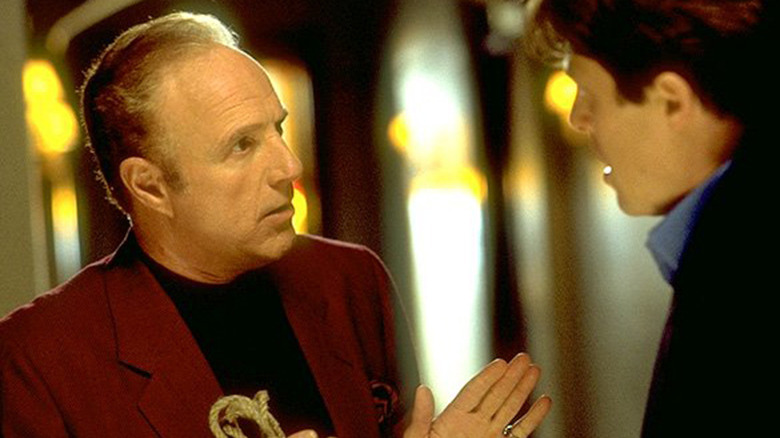
"Mickey Blue Eyes," a movie about an English auctioneer (Hugh Grant) whose future father-in-law (James Caan) is a mafia enforcer, was released in 1999. "Analyze This," a movie about a New York therapist (Billy Crystal) whose latest client is a mafia enforcer (Robert De Niro), was also released in 1999. To say this did "Mickey Blue Eyes" no favors is an understatement. Both films feature iconic performers from "The Godfather" films riffing on their mob movie lineage, but only "Analyze This" was directed by comedy legend Harold Ramis and partially conceived of by "Manchester by the Sea" scribe Kenneth Lonergan. "Mickey Blue Eyes" is good, but it never approaches the level of genius that Ramis and Lonergan tap into with alacrity.
Let me repeat, though: "Mickey Blue Eyes" is good! Caan resists the temptation to ham it up even when winking at his prior, infamous performances. Grant is also a delight throughout, particularly when learning mafioso ways and, later, implementing them poorly. Just because "Mickey Blue Eyes" can't compete with the film it's compared to doesn't mean it isn't worthy.
The Good Neighbor (2016)
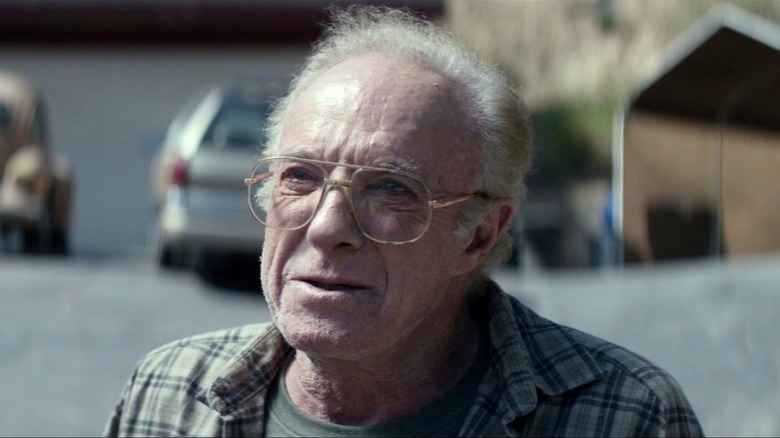
"The Good Neighbor" isn't a swan song for James Caan's career, yet it incidentally functions as one. Kasra Farahani's psychological thriller about two teenagers (Logan Miller, Keir Gilchrist) who enter into a series of cat and mouse games with an enigmatic man named Grainey (Caan) hinges on Caan's ability to be whatever the story demands. He matches those asks and then some. If the asks don't make sense, they're hardly Caan's fault. He uses all the skills at his disposal to make them more believable than they'd be on the page.
This is why "The Good Neighbor" is an aching testament to Caan's excellence. He renders a two-dimensional and unrealistic character into a multi-faceted human, by turns frightening and empathetic. If the movie were better, the film would be remembered as a reminder of Caan's greatness, though it still works on that level. In the wake of Caan's passing, there might not be a better time to watch it.
Cloudy With A Chance Of Meatballs 2 (2013)
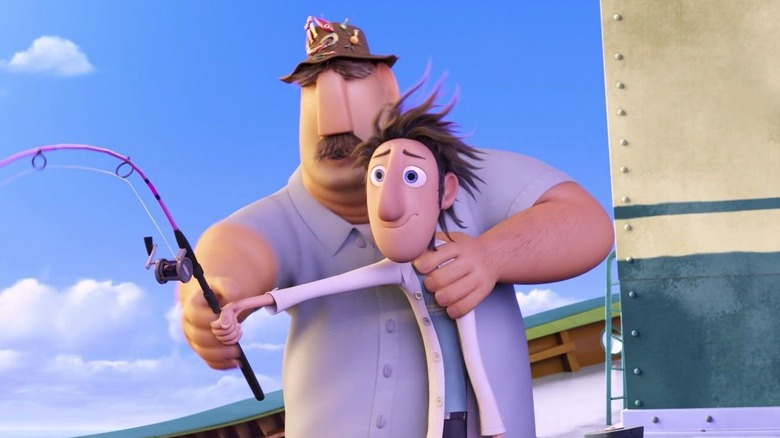
Believe it or not, "Cloudy with a Chance of Meatballs" is a top 10 James Caan film. To be clear, Phil Lord and Christopher Miller's animated feature is excellent and deserves all the lavish praise in the world. It's a fiendishly imaginative adaptation of Judy and Ron Barrett's iconic children's book, and one that's aged like fine, Flint Lockwood-created scotch. "Cloudy with a Chance of Meatballs 2," however, is also excellent. Even if it doesn't hit the same ecstatic highs as Lord and Miller's original, it brings its joyous insanity to the table.
For one, its script was co-written by John Francis Daley, the "Horrible Bosses" and MCU "Spider-Man" scribe who would co-direct and write "Game Night." Daley has a singular comic voice and rhythm, one both quick and considered, and it plays like gangbusters in the world of Swallow Falls. For another, the film is Steven Spielberg's "The Lost World" but with food. Flint (Bill Hader) and his ragtag crew return to the site of the original "Cloudy" to find it overrun by anthropomorphic foodstuff creatures that knowingly wink at dinosaurs and creatures from the "Jurassic Park" universe. The result is a gateway pulp adventure film that is only a case of diminishing returns when compared to the original, a picture that consensus estimation should be higher.
Read this next: 13 Box Office Bombs That Are Truly Worth A Watch
The post 12 Underrated James Caan Movies You Need To See appeared first on /Film.
The Orville: New Horizons Actor Peter Macon On Finding Comedy Under Prosthetics [Interview]
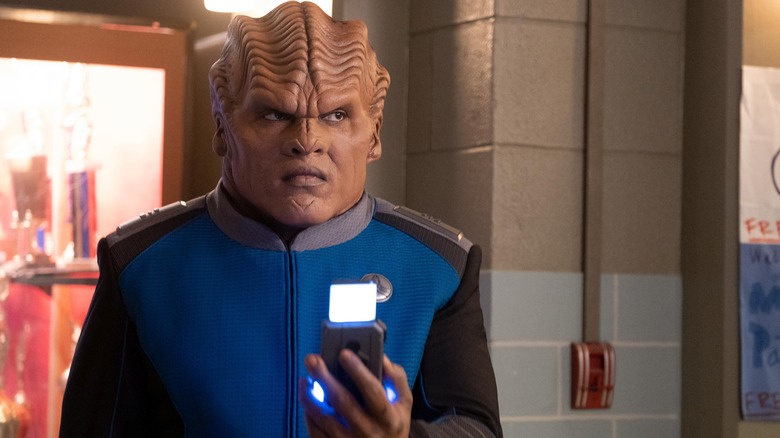
Some of the best and most effective science fiction holds a mirror up to society and offers a good look at how things could be better. No matter how bleak or divisive a scenario might be, the genre can offer hope in what can often be classified as a hopeless situation. This is something that "The Orville" has done time and time again in its three season run so far, and one character that has been at the center of some of the best episodes that exemplify that idea is Peter Macon's Lt. Commander Bortus.
Whenever an episode spotlights the Moclan officer, his family, or his culture, the audience is almost certainly in for a curious, thought-provoking, and sometimes even fun ride. After the episode titled "A Tale of Two Topas" premiered, we had a chance to speak with Macon about his character on "The Orville: New Horizons." As we discussed the literal trials and tribulations of Bortus' family, we also explored all the opportunities for comedy in this role and how fulfilling it has been for him to sink his teeth into such a meaty role as an actor. Plus, we touch on how the episode hits much differently after the overturning of Roe v Wade, and the future of Bortus, Klyden, and Topa.
This interview has been edited for clarity and brevity.
'Seth Would Say That's Putting A Hat On A Hat'
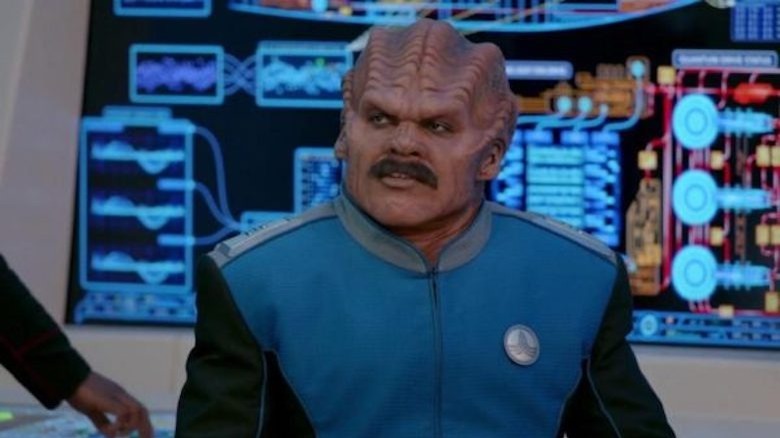
First question: Do you also miss Bortus' moustache?
[Laughs and gestures to his facial hair] Can't you tell? Yeah, that was a lot of fun. I mean, I don't know if Bortus misses the mustache, but I felt like it made him very distinguished. I kind of wish that they would let him keep it, but Seth [MacFarlane] would say that's putting a hat on a hat.
In all seriousness, for such a serious guy, Bortus has been involved in a lot of really fun moments, like participating in a shootout set to Dolly Parton. Do you have a favorite fun moment for Bortus on the show?
It's a funny thing you should ask that. Someone in my family, they've moved out to the suburbs. They're not science fiction people at all. They watched the episode where Gordon is like, "I'm going to do a double helix," or whatever it was called. He's spinning the ship around and there's this one little moment where Bortus is about to throw up. That was a tricky thing to get, but it's like those little tiny things like that. Tom Constantino [is our] editor. [Stuff like] that has a lot to do with him just finding the correct beat, you know what I mean? We shot it a bunch of different ways. Some of it was over the top and some of it was too little, but just trying to find that little space where all this crazy stuff is going on and you have this one cut where Bortus is like [imitates puke face]. I mean, that makes for the funny. So I love all that stuff.
There was another [example in] the smoking episode last season where, the camera is closing in on him from behind and he's in the captain's chair. Then you just see this chair and his head and the smoke billowing out from the chair. That sh*t's funny to me.
These little tiny things -- seeing Bortus in a cowboy get-up or in a sort of 17th century dueling outfit. It's that kind of stuff where it's like, "What am I looking at?" I [like] being able to deal with physical comedy. I studied clown in grad school for two years, and that was like the most humiliating and rewarding class I've ever taken and experienced. Also, being able to work all the physical stuff in as well with the limitations with the prosthetics. His head is extremely large. I have very limited mobility with my neck because his trapezoids are just off the chain, right? But just working within those parameters to make the funny is some of my favorite stuff to do in the prosthetics. All that small stuff is challenging, but it's the stuff that I found to be the most fun when they came down to the comedic stuff and like delivering lines like, "Now entering glory hole." You know what I mean? It's just like, how do you do it with a straight face?
[It's] because English is not his first language. He's not human. And so these are all the things that I have to attribute to him being an alien. That's why it's funny, because he doesn't really, really know what he's saying. It's like telling your three-year-old to swear or something like that. This sort of tight rope that I get to walk with the humor and the drama of his personhood, if that makes sense, is big fun.
'Growing Up, I Really Identified Heavily With Eeyore'
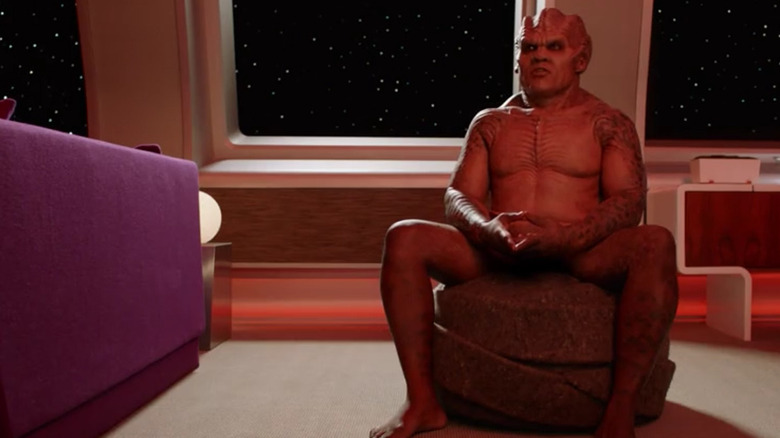
While many confuse stoicism and logic for a lack of emotion, Lieutenant Commander Bortus often shows us that those things aren't mutually exclusive. How challenging was it for you to craft Bortus' signature Moclan disposition while still conveying an array of emotions in the course of the show?
When I was building his identity cerebrally, I sort of said if Sam the Eagle from the Muppets and Eeyore from Winnie the Pooh had a love child, it would be Bortus. Growing up, I really identified heavily with Eeyore because of my voice. I had this crazy voice when I was young and he's sort of like an emotional dude. I identified a lot with Eeyore, more than Tigger or Pooh. Then watching the Muppets, I'm like Sam the Eagle. Animal was my favorite, but with Sam the Eagle, I just remember it was stoicism, but he was also kind of silly. His hubris undid him a lot because he was just so proud, but he just kind of missed subtle things. I just felt like that's a great model.
Then with the prosthetics, that helped me to build his physicality. I always made it a point [of] stacking my spine upright, sitting upright, and [being] very formal. He never says, "Won't," he'll say, "Will not." He doesn't say, "Can't," he says "Cannot." It's very formal. So I took that writing and applied that to his physicality, which is very measured, because that's what it means to be an officer.
And then, he is complicated, right? He's a complicated soul because he's sort of a misfit Moclan, you know what I mean? He's not a traditionalist like Klyden is, so that separates him and alienates him a bit from his own people in a way. And that's all working. He says in season 2 where he develops the porn addiction, "I went inside as opposed to dealing with my life." I'm paraphrasing, [but it wasn't] the smartest solution considering everyone almost died, but you could feel [how Bortus was] kind of trapped, in a way, of not knowing what to do. I escaped into this place and that was how I dealt with the reality of not loving my partner or falling out of love with my partner, or hating my partner, or having this huge obstacle between us, which is our child. And so, on the surface it was like this stoic face. But on the inside he's crying out for help. So there's all of that operating.
"Duality" is a word that I feel can sum up his existence. The duality of being an officer in a science vessel or a spaceship essentially getting in space battles, and then having your family on board at the same time. The duality of being a misfit Moclan and being partnered with a traditionalist Moclan. This makes for a lot of conflict and I feel like he is always trying to sort out conflict inside. But because of our physical makeup, you can't really see that because it's not a pliable, very expressive face. A lot of that has to be done conveying these things in my mind and with my eyes and that presents a great challenge to try to walk that line of that duality.
Then with the humor, to him being unaware ... it's funny to be like, "I'm going to eat this glass. You know, I could eat anything," and not comment on it. That's what makes it funny. I remember when I auditioned for the part, I had an idea of commenting when he has this conversation with [Seth MacFarlane's character Ed Mercer]. The scene was Bortus and Ed and talking about the egg and he was like, "I need 21 days off for paternity leave. I have to lay this egg." [Ed asks], "You lay eggs? Are they large eggs?" And the line is, "They are quite large, yes." In my audition, I wanted to try to put some funny in it by commenting on how large the eggs are because everybody thinks it's coming out of his butt, of course. That's not how it works, but I won't tell you that. But Seth was like, "No, it's funnier if you just lay it out flatly, straight, factually. If you swallow up the funny, then we don't get the funny." From the beginning, I've always had to walk that line of, like I said with "Now entering glory hole." It's way funnier if I say that just flat out factually ... and just not comment on it. Because then you guys, the audience, gets to [react]. So it's technical as well. That's all extremely enjoyable for an actor like myself. I just love the tragedy and I love the funny, you know?
'This Is Heavy, Man'
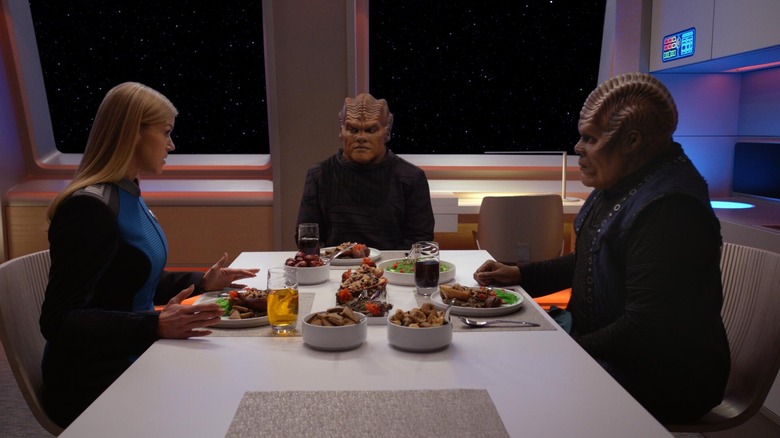
You've talked a lot about duality and that's a huge theme of the season 3 episode "A Tale of Two Topas." How did you feel about the script when you first read it? Were you surprised by where it left Bortus, Klyden, and Topa by the end?
I won't say surprised. I loved it because it was a deeper dig from [season 1 episode] "About A Girl." It just continued to mine what that relationship of those three microcosmically are [and] macrocosmically with all the Moclans, which is still being unearthed. I was like, "Okay, what's going to happen?" I can't think of the word, but like I felt like an audience. And it wasn't until I read, I think it's episode 7 or 8 that's coming, which bookends or fleshes that out further.
So when I read "A Tale of Two Topas," at first I was like, "What? Okay, so now I have to sing? Are you joking?" But he's not a terrible singer, let's put it like that. But then [it's] just getting deeper and deeper and deeper [with] the relationships with these Moclans and how they're juxtaposed with humanity. I was very excited and proud that our storylines -- the coexistence of human beings or just the coexistence of species sort of rests on our shoulders in the sense of the way that we unpack what that is, on a moral basis. Did we ask these questions? Like, well, is the planetary union, which seems to be sort of human centrist in terms of its morality barometer ... we continue to explore the conflict of what this is. And it's conflict on a major scale, but a macro scale. And it's conflict on a micro scale just between the family and [also] what this does to the union. It's operating on all these, again, dualities. And that's just great writing when you have conflict that's operating on both scales.
I was very excited to shoot it once we read it. And then to watch it, I was like, "Oh, wow, yeah. This is heavy, man." I really had, I won't say a great time shooting it, because it was heavy, emotional stuff ... it just felt like a great pocket to fit in dramatic scene work. And it was just so great to work with Chad and Imani because they're just so solid, solid actors. Nothing was manufactured. It was a great time. It felt like it was on a stage. I grew up doing theater for 30-plus years and it just felt like that. It felt very familiar and very familial. Some really deep -- not arguments, but conflict with family, and that's heavy stuff.
Coexistence
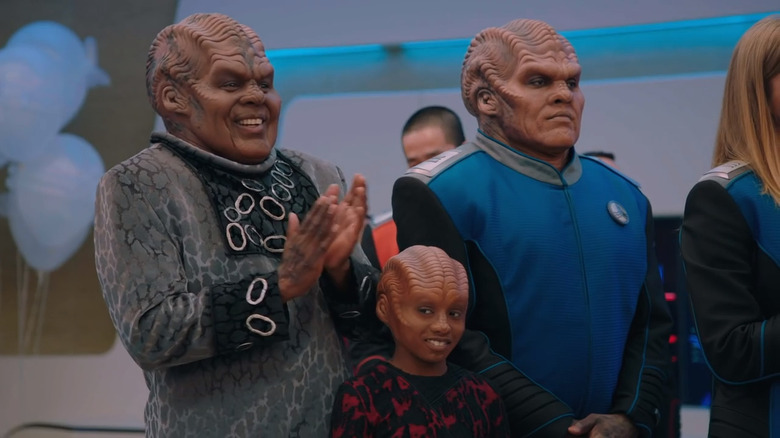
Does the episode hit differently now for you after the current events here in America, particularly regarding healthcare for women?
Oh yeah, absolutely. Yeah, man. I am just thoroughly, thoroughly disgusted right now....
I just don't understand. Mother's Day, right? Nothing that we have, nothing -- this conversation, this computer, nothing, other than the natural elements of trees and wind and fire, would exist without women. I don't understand the agenda of not teaching critical race theory. Because [why wouldn't you?] There were a lot of non-African people who were abolitionists and there are a lot of white people in this country, the experiment of America, who were abolitionists. Why wouldn't we want to teach about them? Why is everything so black and white?
Anyway, you get my gist. But I'm just disgusted. Disgusted, and I don't understand the agenda. But I don't want to just be disgusted. I don't want to just be mad. I still believe that this place ... I mean, I don't know if I still believe it, honestly. But I want to believe that the experiment can still go forward. This place is about difference, and collective difference, and getting along, and coexistence, and all of this. I want to believe that. I don't know that I do right now.
But with the show, what's great is that we're [addressing all of that]. I think "About A Girl," season 1 episode 3, it aired right when "Bathroomgate" was going on, when they were trying to decide who can use what bathroom and like the ridiculousness of all of that. To have this show about gender reassignment be a mirror reflecting back on the culture, it's nice to have these shows that are dealing with these issues that are synonymous, in a way, with what's happening in our world right now.
It feels significant. It feels like it's relatable. It is not removed science fiction that's so far ahead in the future that it's not relatable. I guess it is more than human nature, but like carbon-based, organic, whatever -- species getting along. Coexistence, period. Just coexistence, what that entails, and what that means, on the bed of real issues. I feel like makes our offering to the zeitgeist that much more relevant and I don't feel like we're doing it in like this weird vacuum. It's not just escapism. It's like we're actually taking on issues that we're grappling with right now, and I love being a part of that.
My grandmother said, "Your only job in the world is to treat people like you want to be treated and leave the world better than you found it. That's all you got to do." It certainly feels good, as an actor and an entertainer, to be doing work that's meaningful. It's not just wild escapism and you can't just walk away apathetic. I feel like I'm doing something that matters. At the end of the day, I think that's what we all want to do, right?
'It Was Not Without Cost'
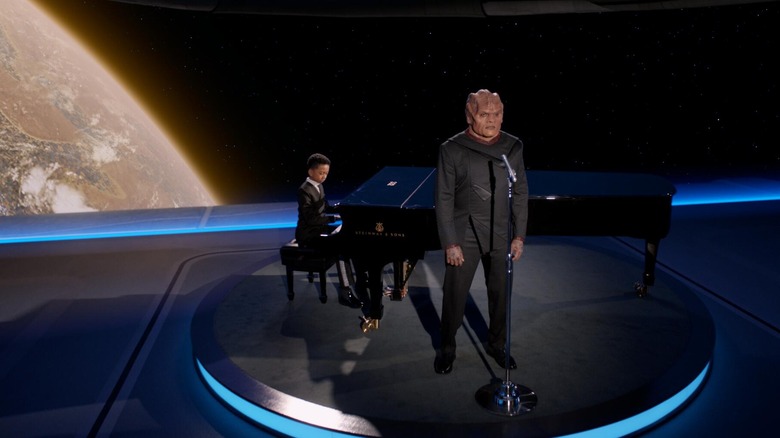
One of the most emotional moments of the episode for me was when Bortus was singing "You'll Never Walk Alone" in front of the whole crew as Isaac reverses Topa's sex change operation. Seth MacFarlane loves a showtune and he always inserts them pretty masterfully. While Bortus clearly has the support of the crew, how do you think he'll do as a single father now that Klyden's out of the picture?
I mean, I think we know the answer to that. My wife and I have two boys and right now she's at work and I'm at home. And there was an incident that I'm going to have to deal with when I get off this meeting. [Laughs] But you know, it's not easy. Not easy at all. That's the reality of parenthood and being a single father or being a single parent.
It was hard enough having the family on the ship, period, because it seems like every episode or two we're engaged in some life-threatening situations. And in the back of Bortus' mind, his baby and his mate are on the ship. I have to keep my head on the swivel and do my job while I'm on the bridge as best as possible so that not only the crew survives, but my family survives. So there's this duality again that's happening. And now that Klyden has left ... I don't know, man. The sweet victory of Topa having her identity and being able to own and claim who she is, that's a wonderful thing, but it was not without cost. That's great drama, you know what I mean? That's great tragedy. That's great conflict. So you'll see how it goes, because what I love about this show is if you open a can of worms, we're going to look at all those worms.
So to answer your question, it'll be very hard. I think that's just relatable. Parents split up and now one parent is the primary caregiver and their work doubles. The great thing is that the Topa is a little bit more independent. But the dynamic ... now we're going to be sitting and having dinner alone, the two of us, as opposed to -- you know, it's sad. It's hard. And I think that we'll do that justice.
Definitely. And shout out to your co-stars Chad Coleman and Imani Pull for bringing Klyden and Topa to life. You and Chad have evoked such emotion throughout the series run so far, and you all have done a phenomenal job this season.
Yeah, shout out to Chad and Imani. Because it's easy for audiences to sort of sh*t on Klyden. But at the end of the day, he's a traditionalist, he's a Moclan, right? And I think that we're honest about the moral parameters of [different species]. If it's an interplanetary union and the concept is that we are coexisting with multiple species, who is to say that the human morality barometer is best? It's easy for us to like dismiss Klyden, but it's necessary because he represents a reality and a conflict that is honest. We have to deal with that. We can't just sweep all the morals under the human rug or like the human sensibility of right and wrong.
That's something that I'm a big stickler for when it comes to science fiction: If you're going to present different species with different belief systems, different cosmologies, different all these things together, who's to say who's right? Because we're doing this, it's a human TV show for human beings. I think that's the most relatable, but we can't dismiss the actions of other species because that's what they are. They're other and they're different. Different is not inferior. Different is different.
'It Just Kind Of Stops Me In My Tracks'
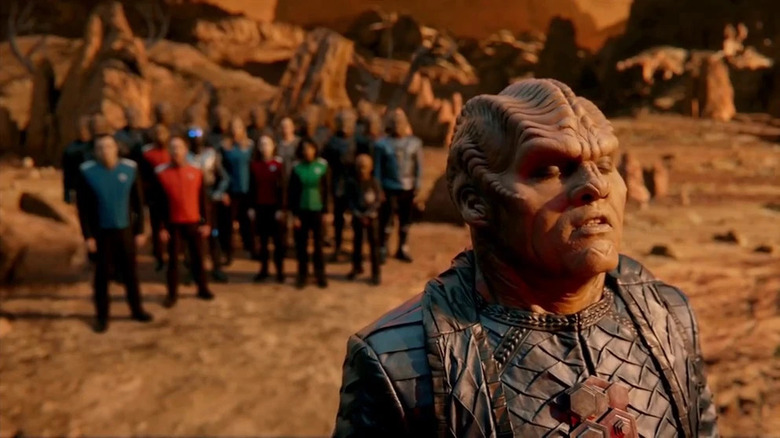
Finally, has any piece of media changed your life as profoundly as "Rudolph the Red-Nosed Reindeer" changed Bortus' life?
Ah, man, that is a crazy question. I will say that going to see plays when I was younger [changed my life]. My mother would take me to see plays in downtown Chicago. And when I moved to Minneapolis, I went to go see plays at the Guthrie Theater. That experience of seeing human beings react to extraordinary circumstances on stage, as opposed to watching a movie, moved me to the point where I wanted to do that. I wanted to be involved in what that was. I think it was a play called "Cloud Tectonics" [by José Rivera] that changed my life. I sat in a theater and I was just like, "I don't know anything as a human being."
The profundity of something so simple changed Bortus' life with "Rudolph the Red-Nosed Reindeer" and that the notion of other and being accepted, yeah, that happened to me ... just by growing up watching plays. Going to the theater when I was 10, 11, 12, 13, 14 years old, really changed my way of thinking about the human condition or just the human folly or just investigating emotions.
I think a lot of James Baldwin novels did that for me, too. Reading "Another Country" and "Tell Me How Long The Train's Been Gone" and "The Fire Next Time" when I was 15 or 16 years old just sort of altered my [perception]. You come out of that and you're like, "Wait a minute. I don't know anything about love." I think "Space: 1999" [also] really did some stuff to me when I was four years old watching people transform. And the camera would zoom into the person's eye and they'd come out a whole other ... you know, stuff like that really just sort of split my wig. And it hasn't changed. I feel like I'm still like that five-year-old kid when I see stuff I'm just in wonder of, and it just kind of stops me in my tracks.
New episodes of "The Orville: New Horizons" arrive every Thursday on Hulu.
Read this next: The 14 Best Sci-Fi Shows On Amazon Prime
The post The Orville: New Horizons Actor Peter Macon on Finding Comedy Under Prosthetics [Interview] appeared first on /Film.
The 15 Best RPGs on Nintendo Switch - CNET
Evil Dead: The Game turns back time with Army of Darkness DLC

Well helloooo, Mr. Fancy Pants...
Saber Interactive and Boss Team Games have released the first major DLC update for their multiplayer horror title, Evil Dead: The Game. Now available to download on all platforms, the content drop contains maps, modes, and weaponry for you and your posse's battle with the spooky Deadite army.
Themed after the third mainline Evil Dead movie, Army of Darkness, (aka The Medievil Dead, aka Bruce Campbell vs Army of Darkness), the DLC features a much-needed new map, styled after the castle keep from the 1992 horror comedy. Visit the fortified Castle Kandar, the notorious abandoned windmill, and the Arthurian Outpost as you and your fellow monster slayers gather the mythic artifacts necessary to banish the Kandarian Demon and its minions to the Netherworld.
https://youtu.be/WP8NAS8J5zA
In addition to the new map, two suitably medievil weapons are being added to the in-game arsenal in the form of a powerful explosive crossbow and the Homer Simpson standard, a handy, skull-crushing mace. In addition, a brand new "Exploration" mode will let solo players explore the maps at their own pace, which is perfect for learning the layout and practicing your demon mashing skills before jumping online with highly skilled randos. All of the aforementioned content is free right now for all players.
If you're a die-hard deadite and fancy dropping some dollars on some cosmetic content, then a new character skin bundle is also available for purchase. The Medieval Bundle ($7.99) contains new outfits for Henry the Red and Lord Arthur, along with a snazzy Golden Gilded ensemble for the Necromancer Army. This bundle also contains a brand new jumpscare. You read that right, paid DLC jumpscares. The Ash S-Mart Employee Outfit and The Gallant Knight outfit are also available as separate purchases, priced at $2.99 each. No sign of Embeth Davidtz. Heartbroken.
Evil Dead: The Game is available now on PlayStation, PC, and Xbox platforms. A Nintendo Switch edition is expected later in 2022.
The post Evil Dead: The Game turns back time with Army of Darkness DLC appeared first on Destructoid.
